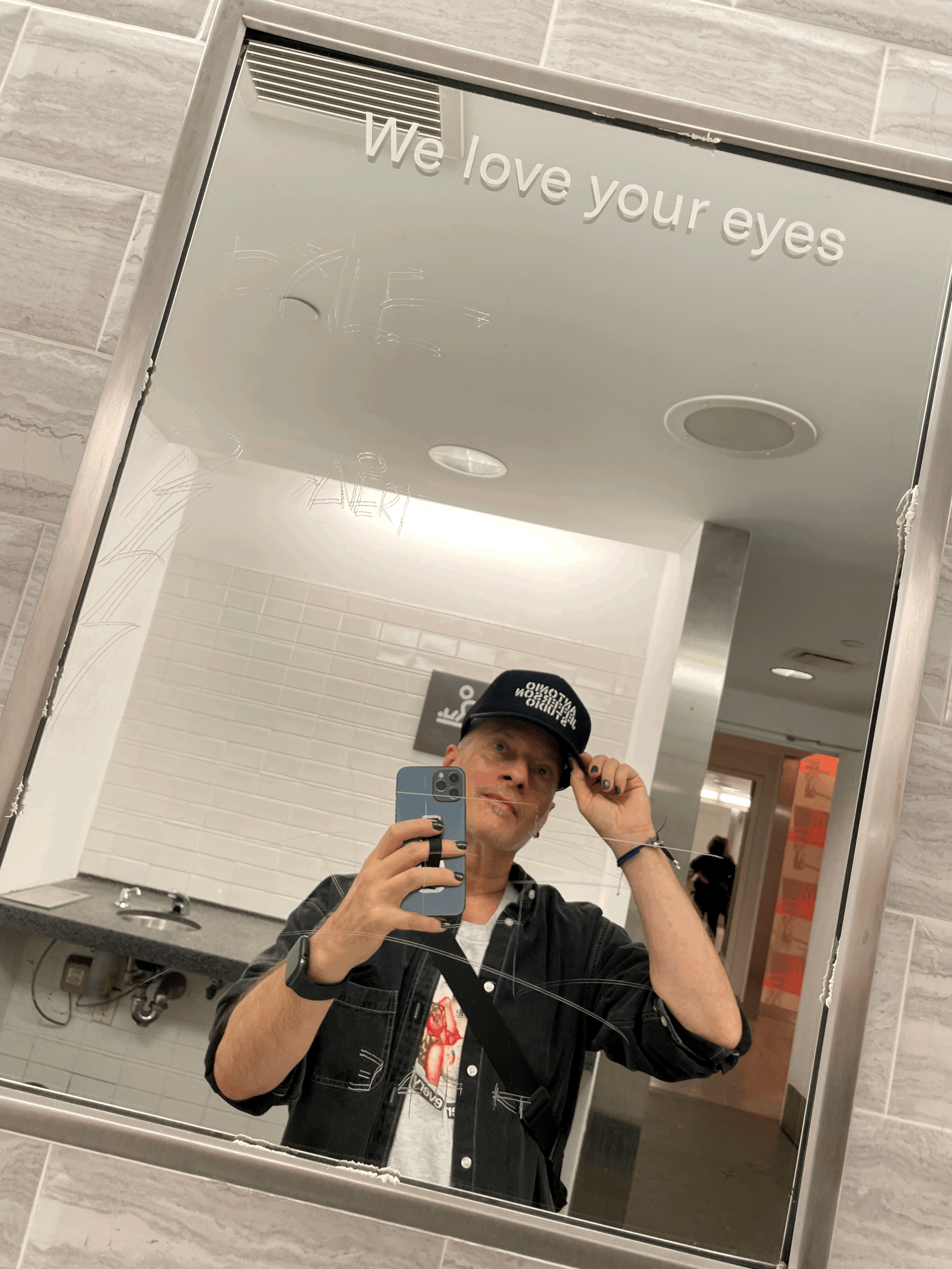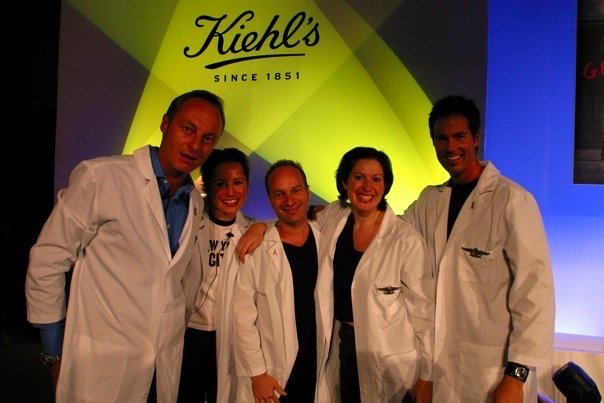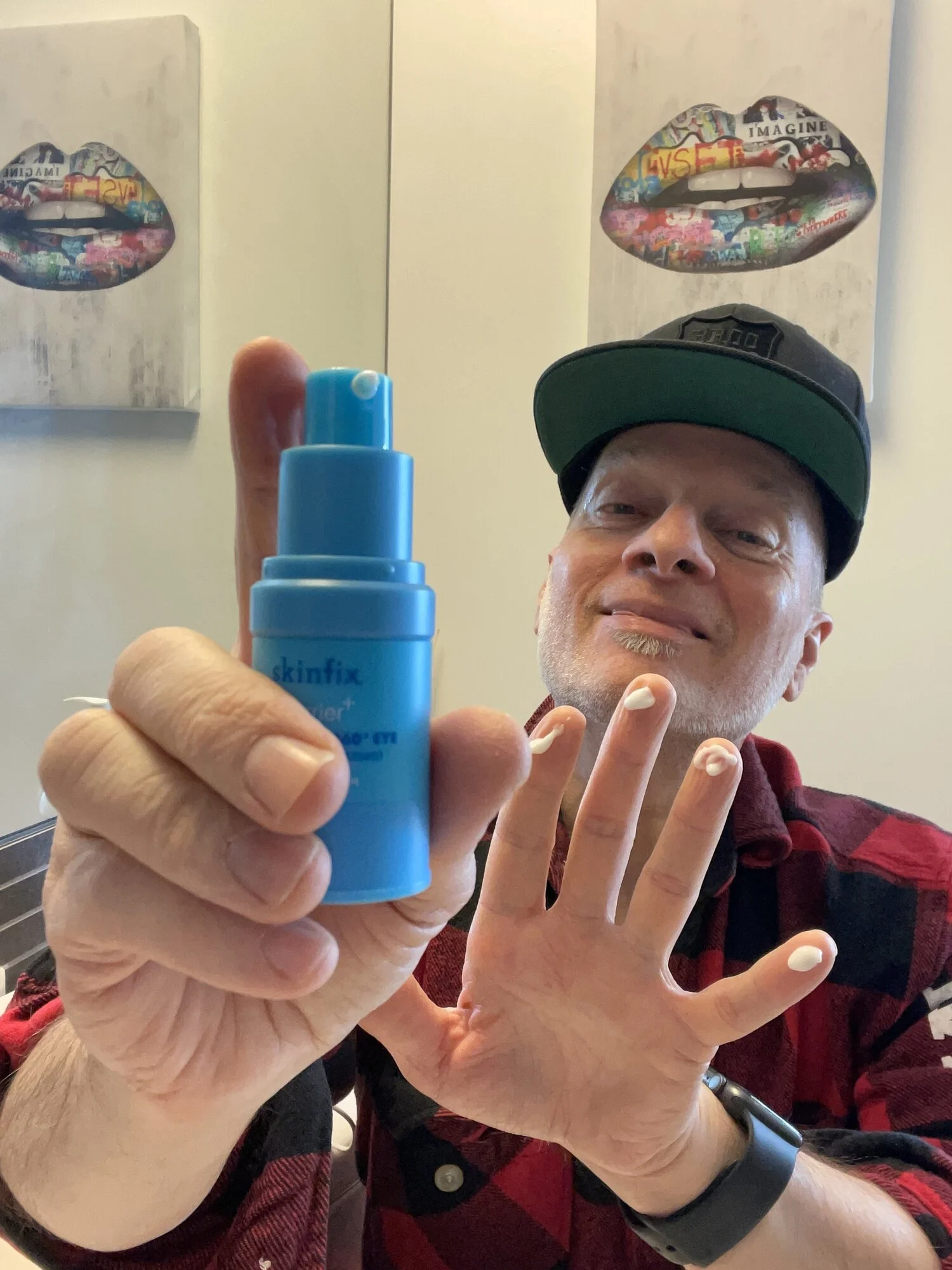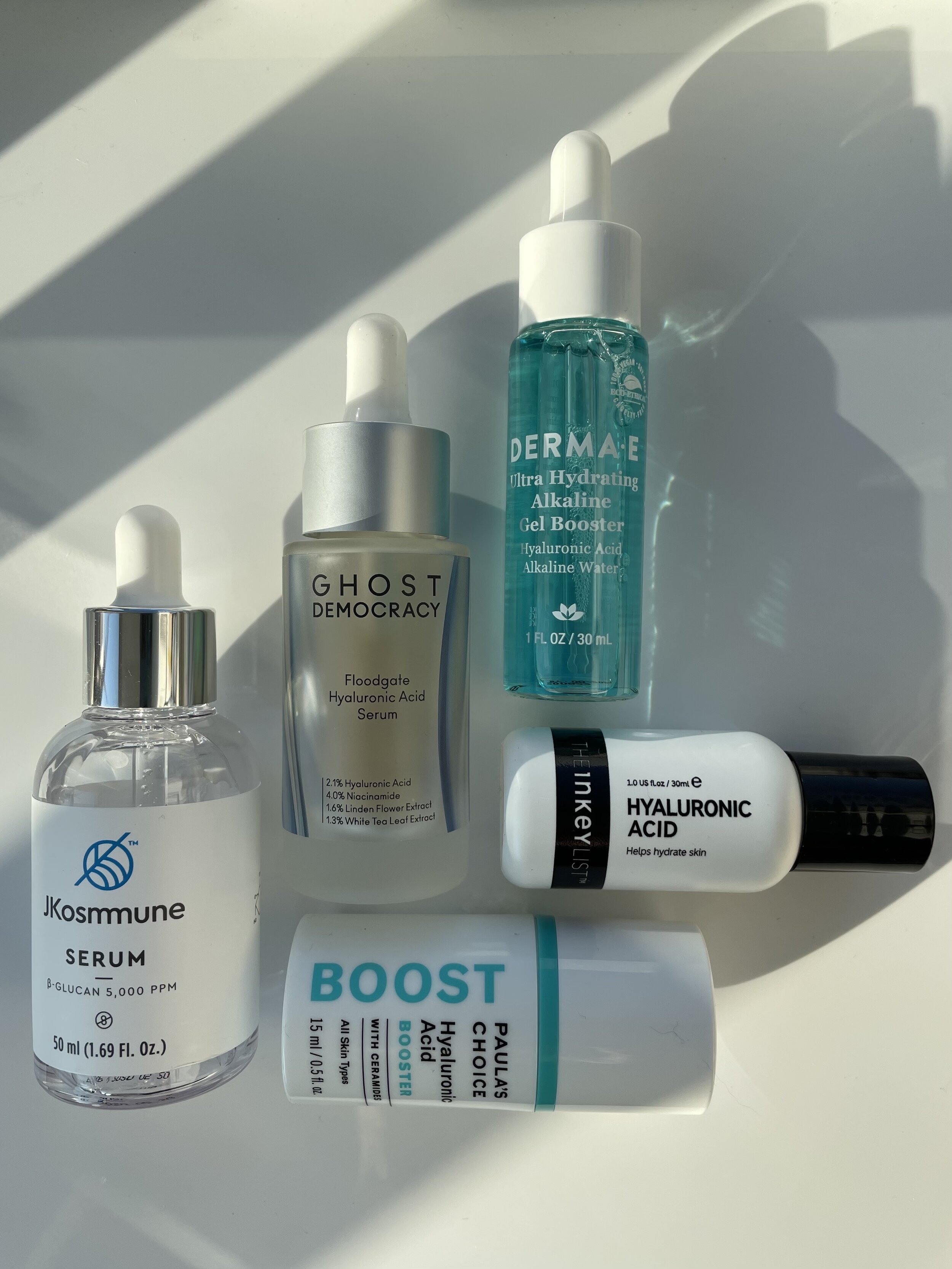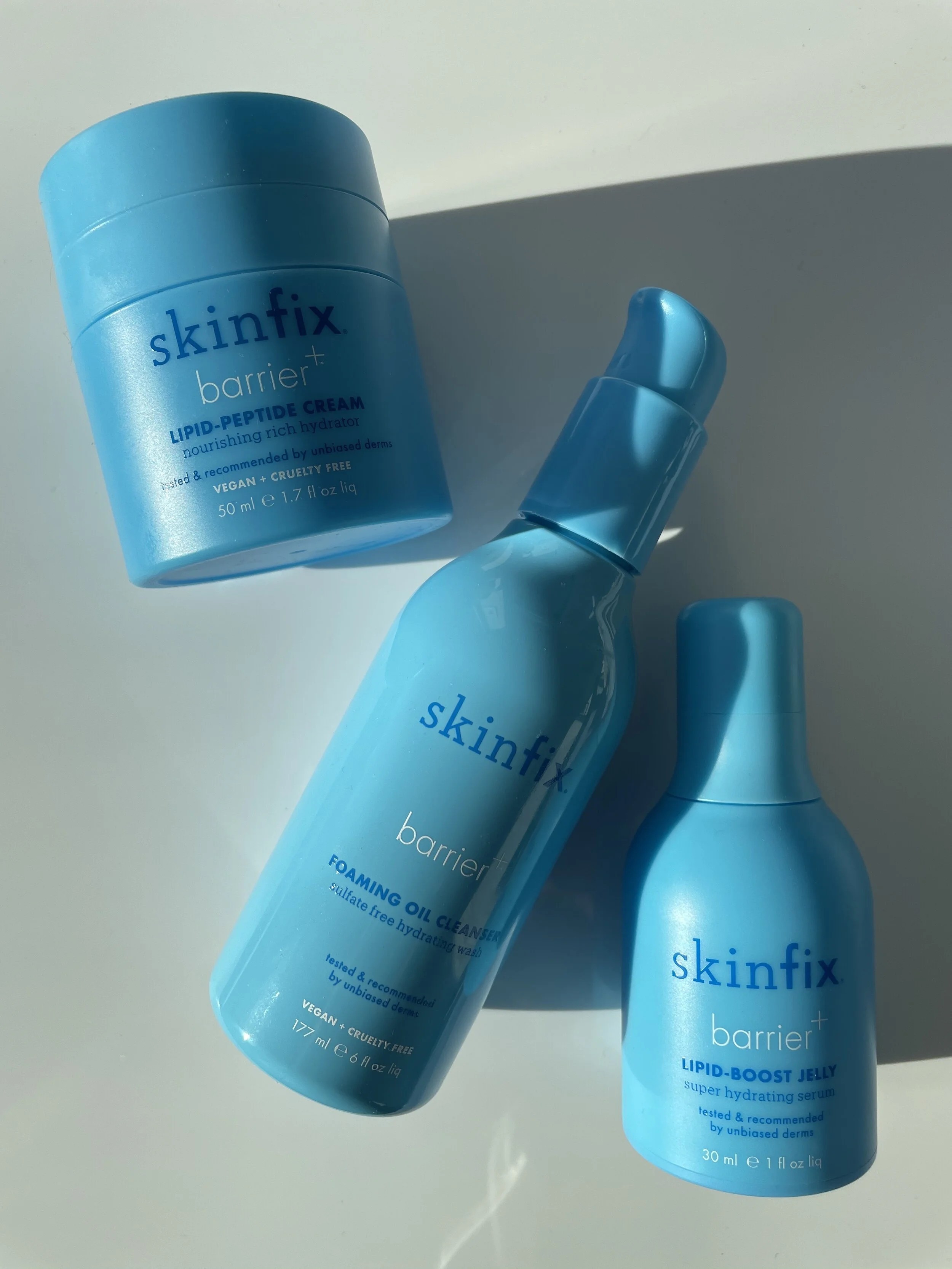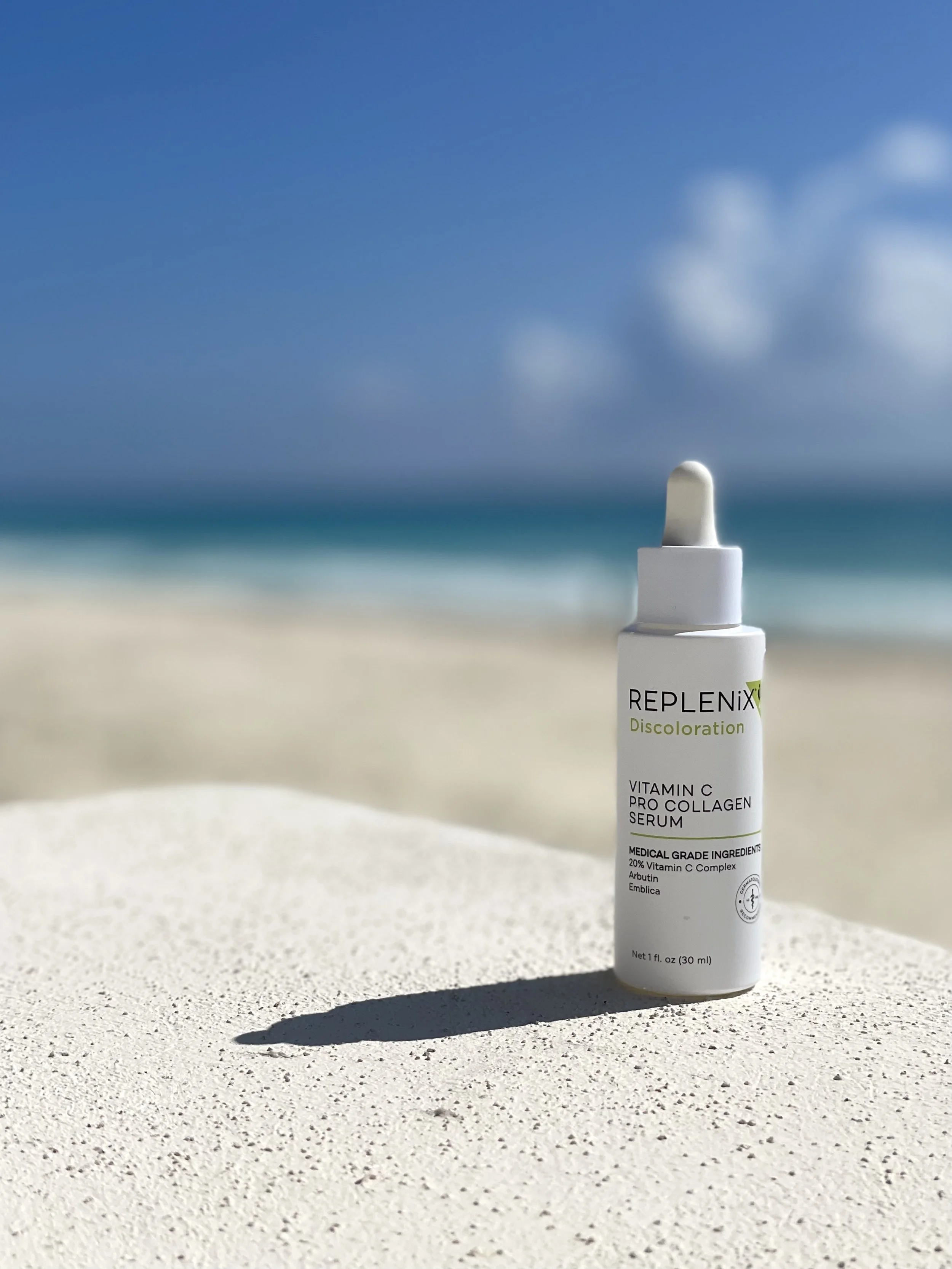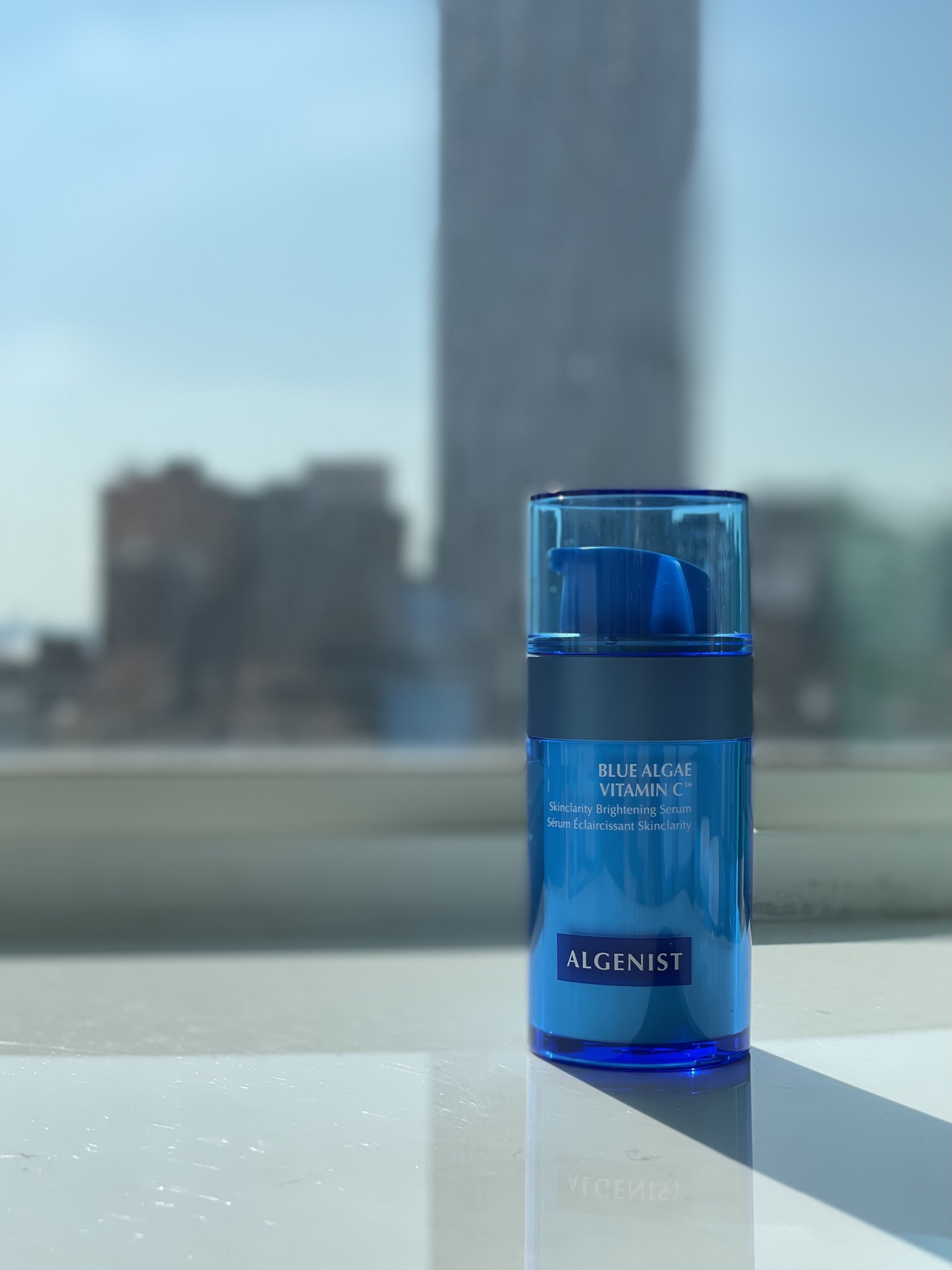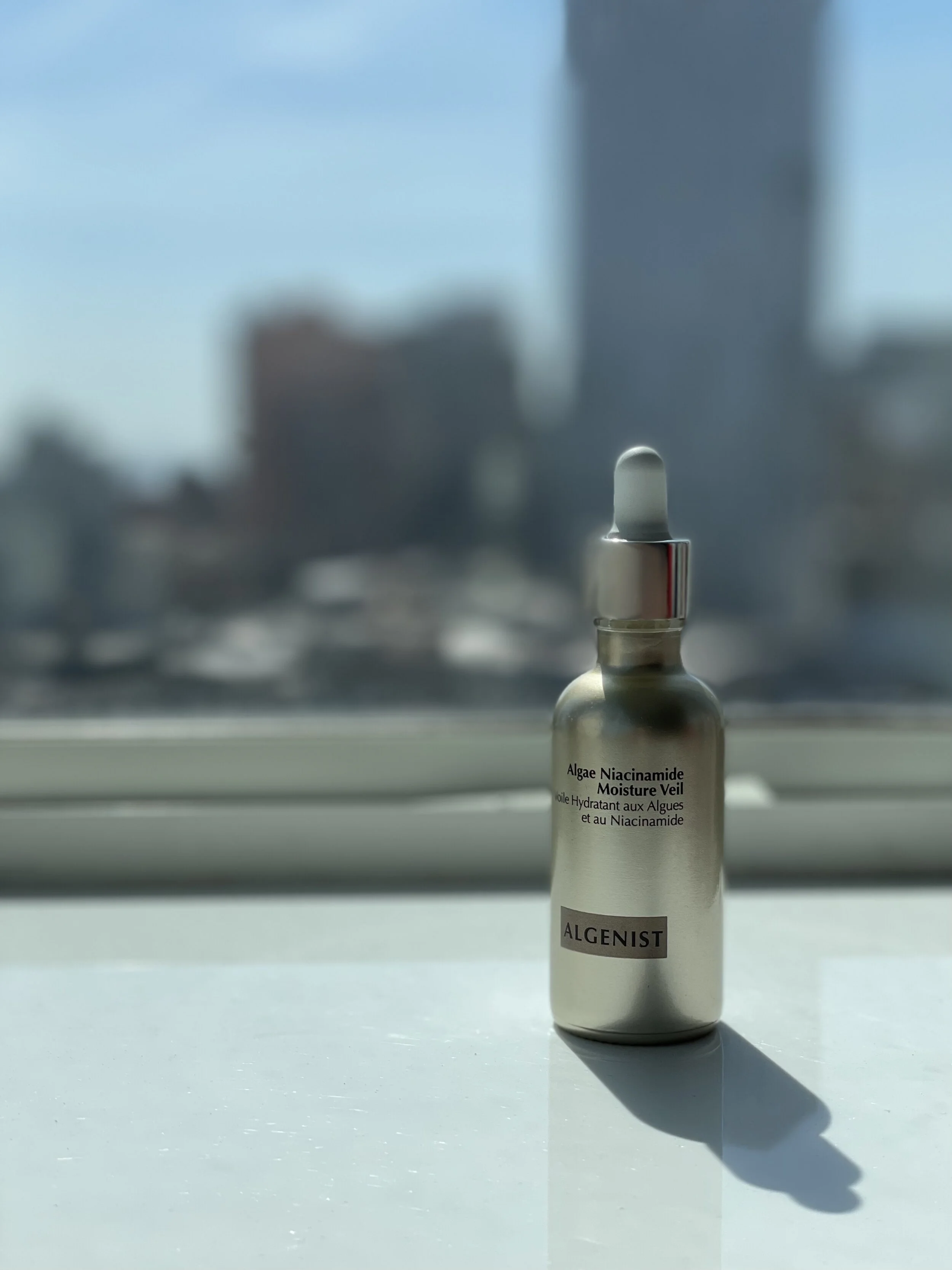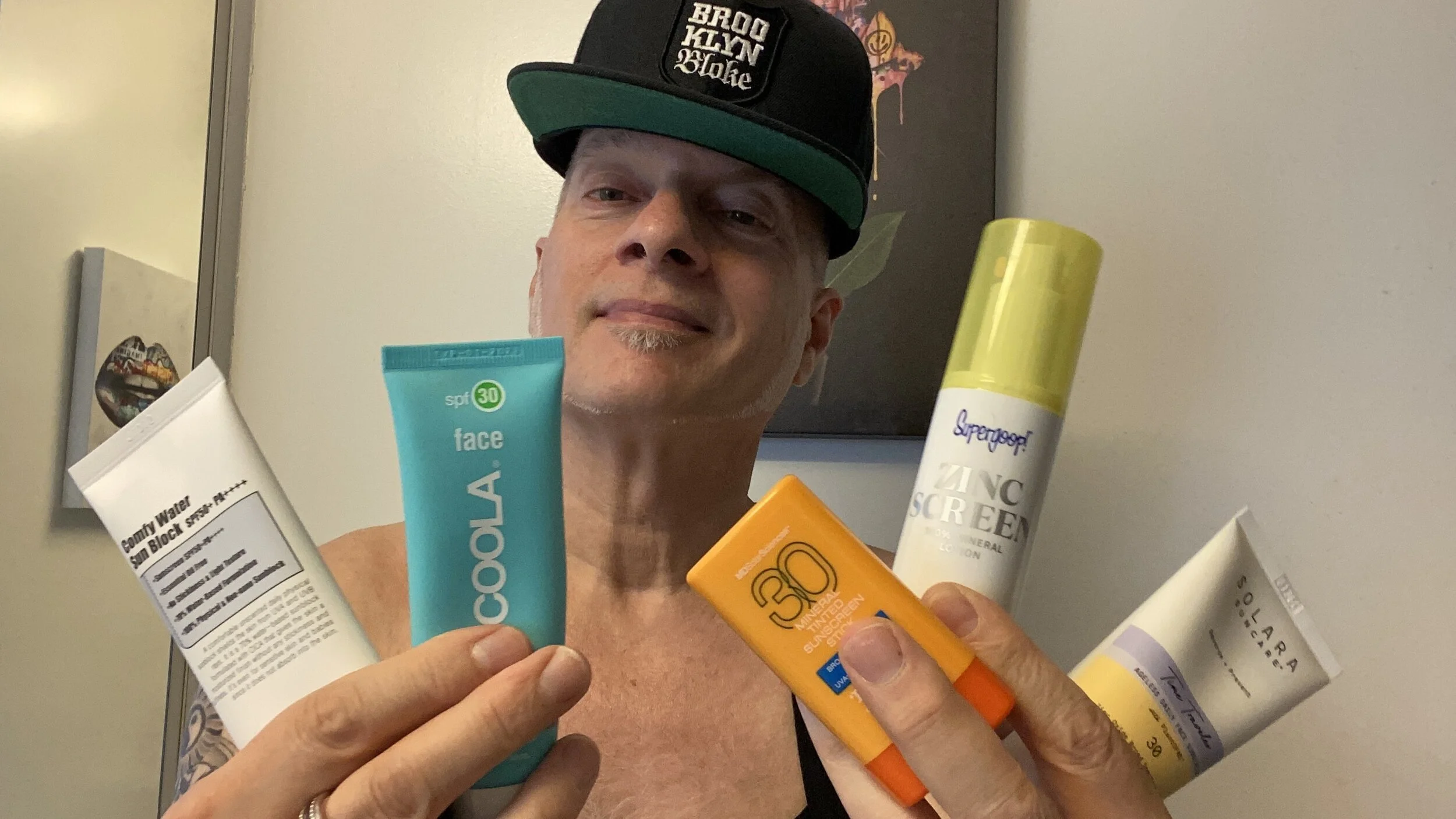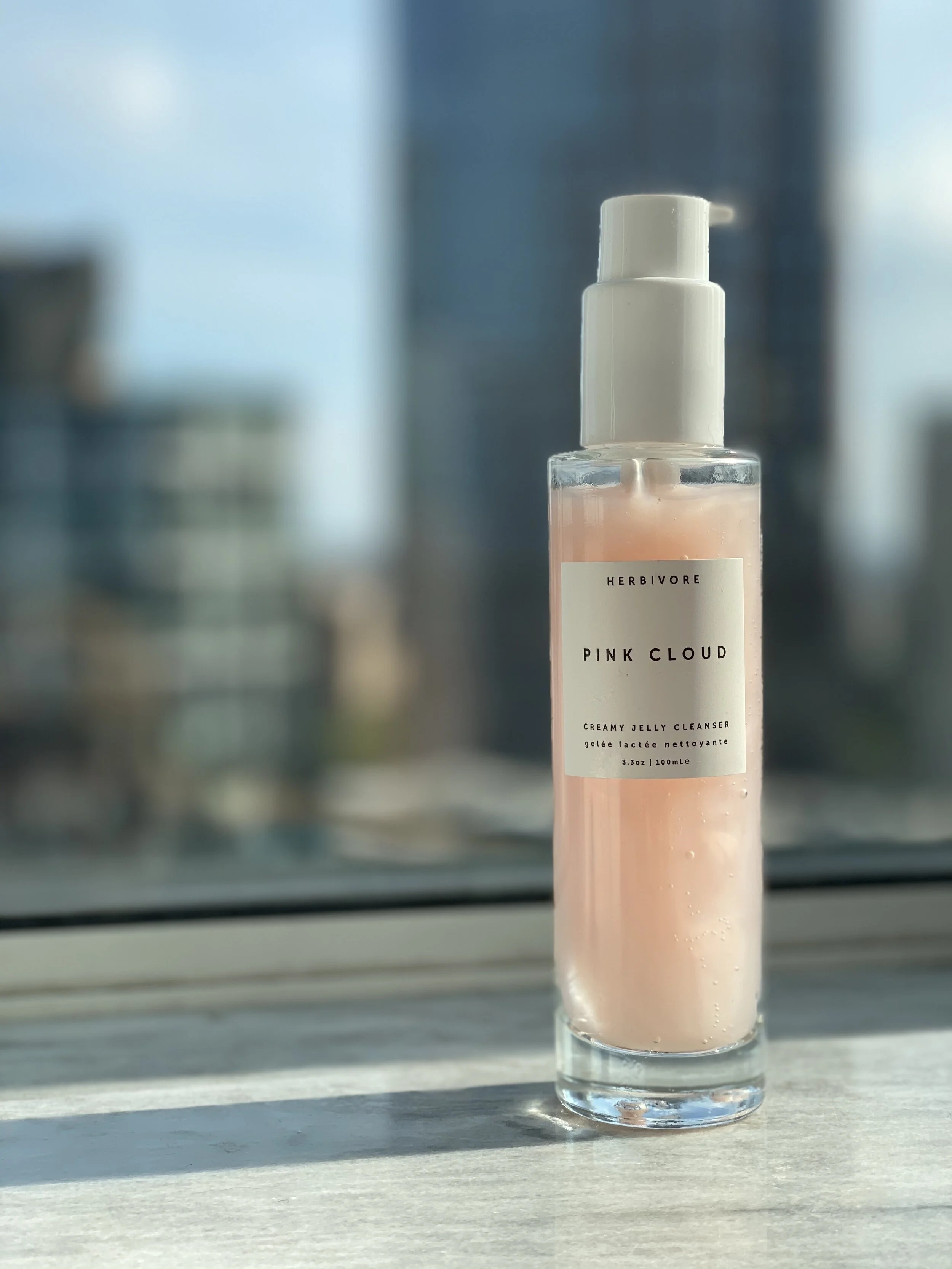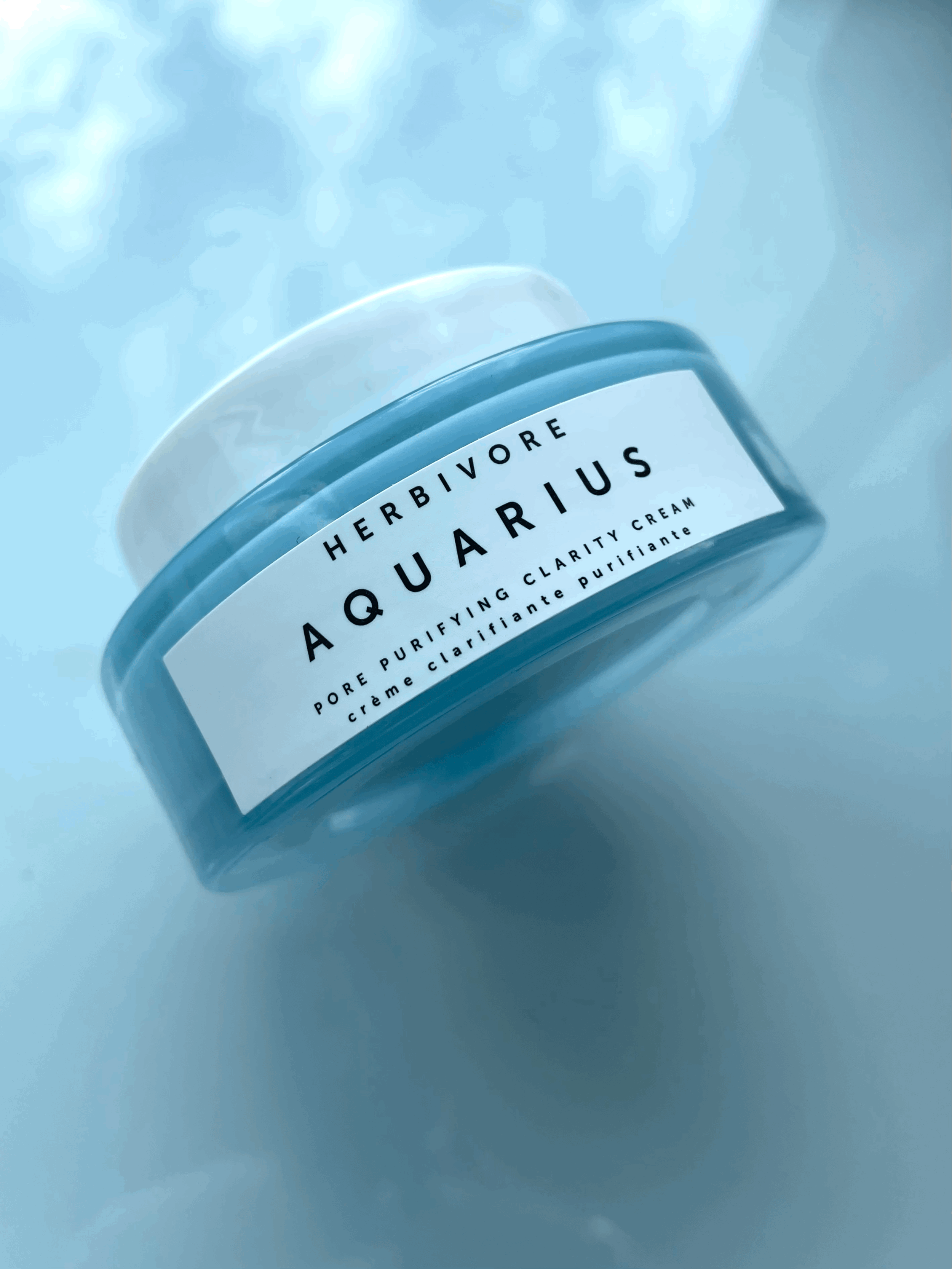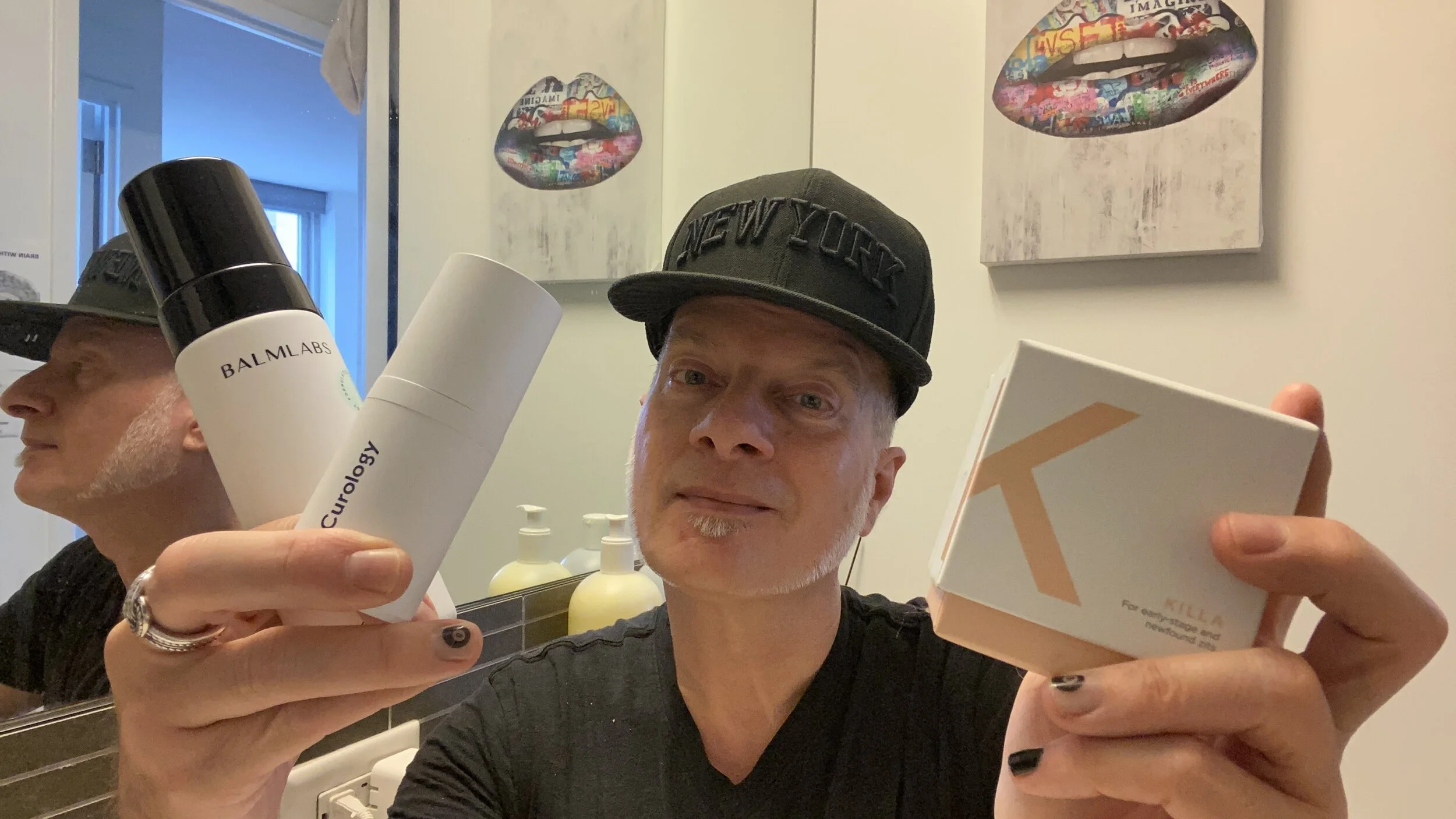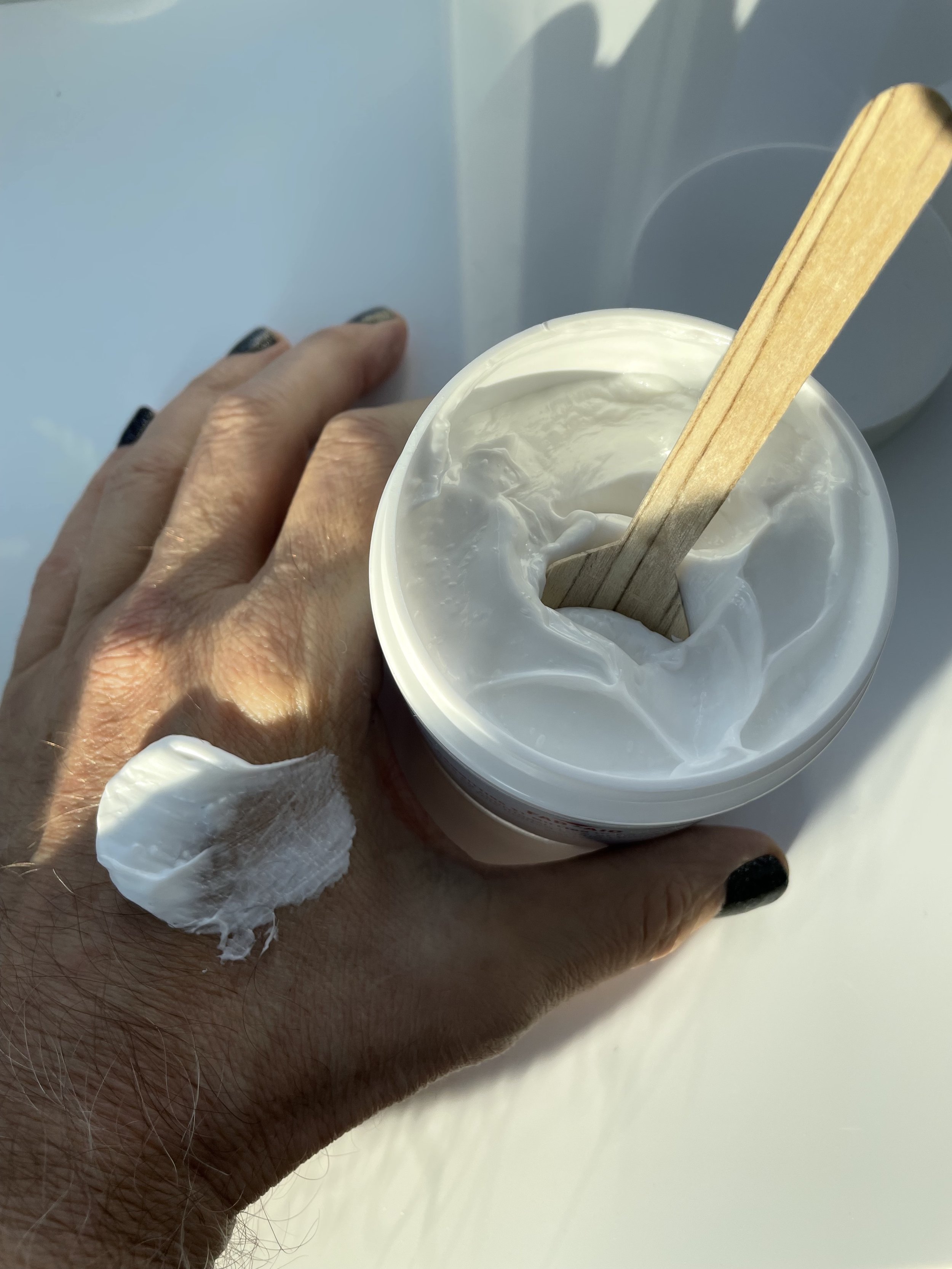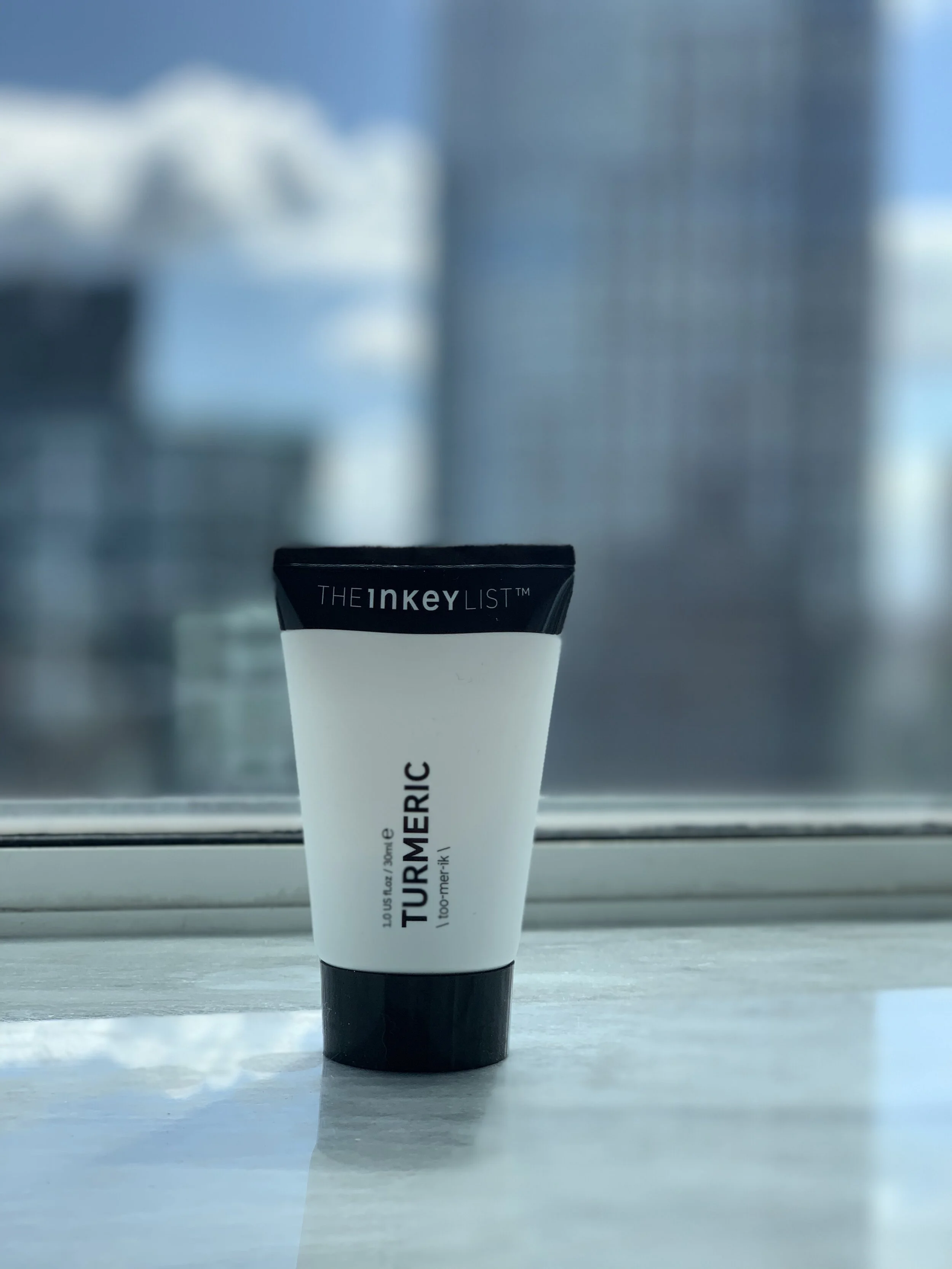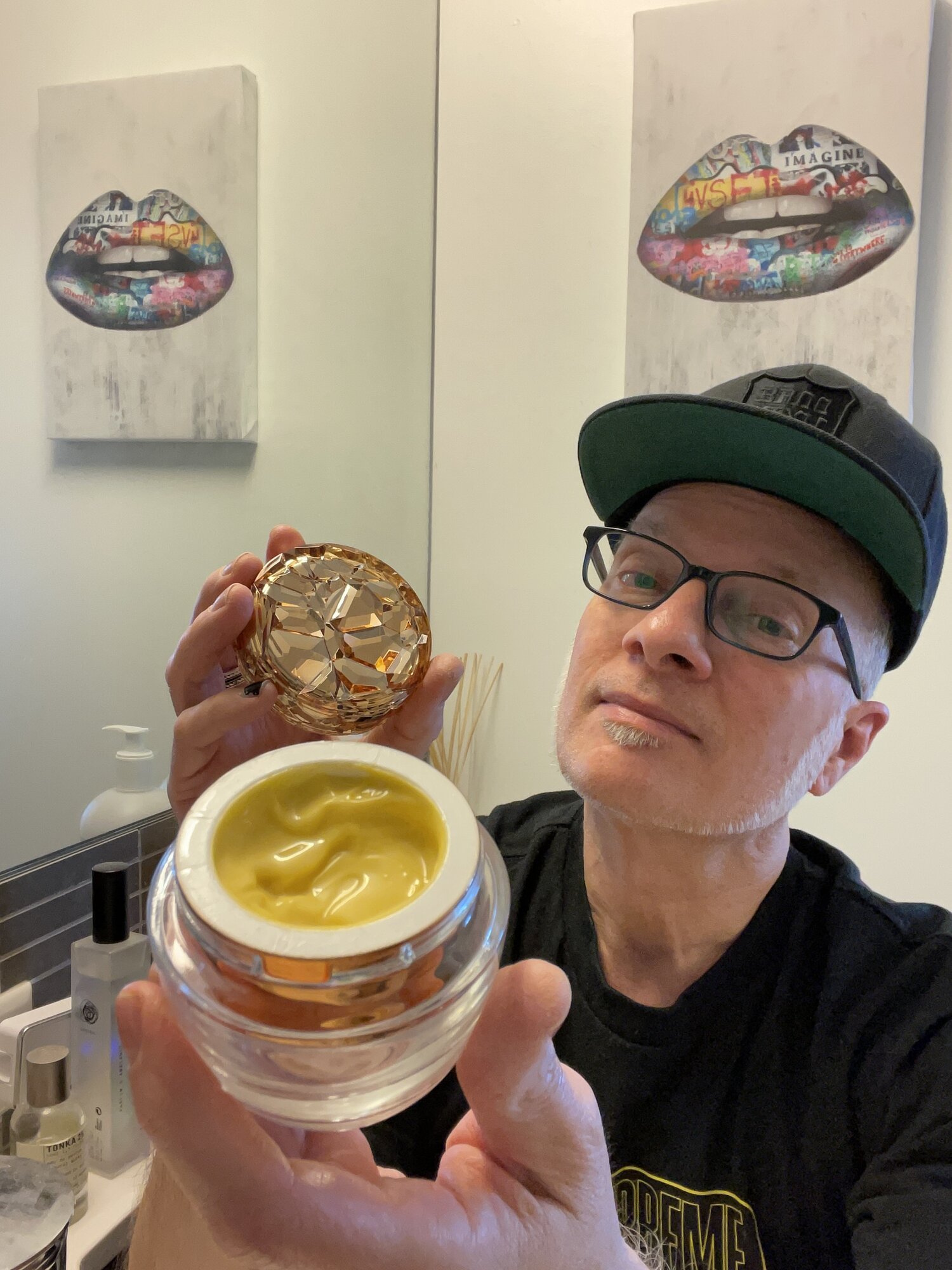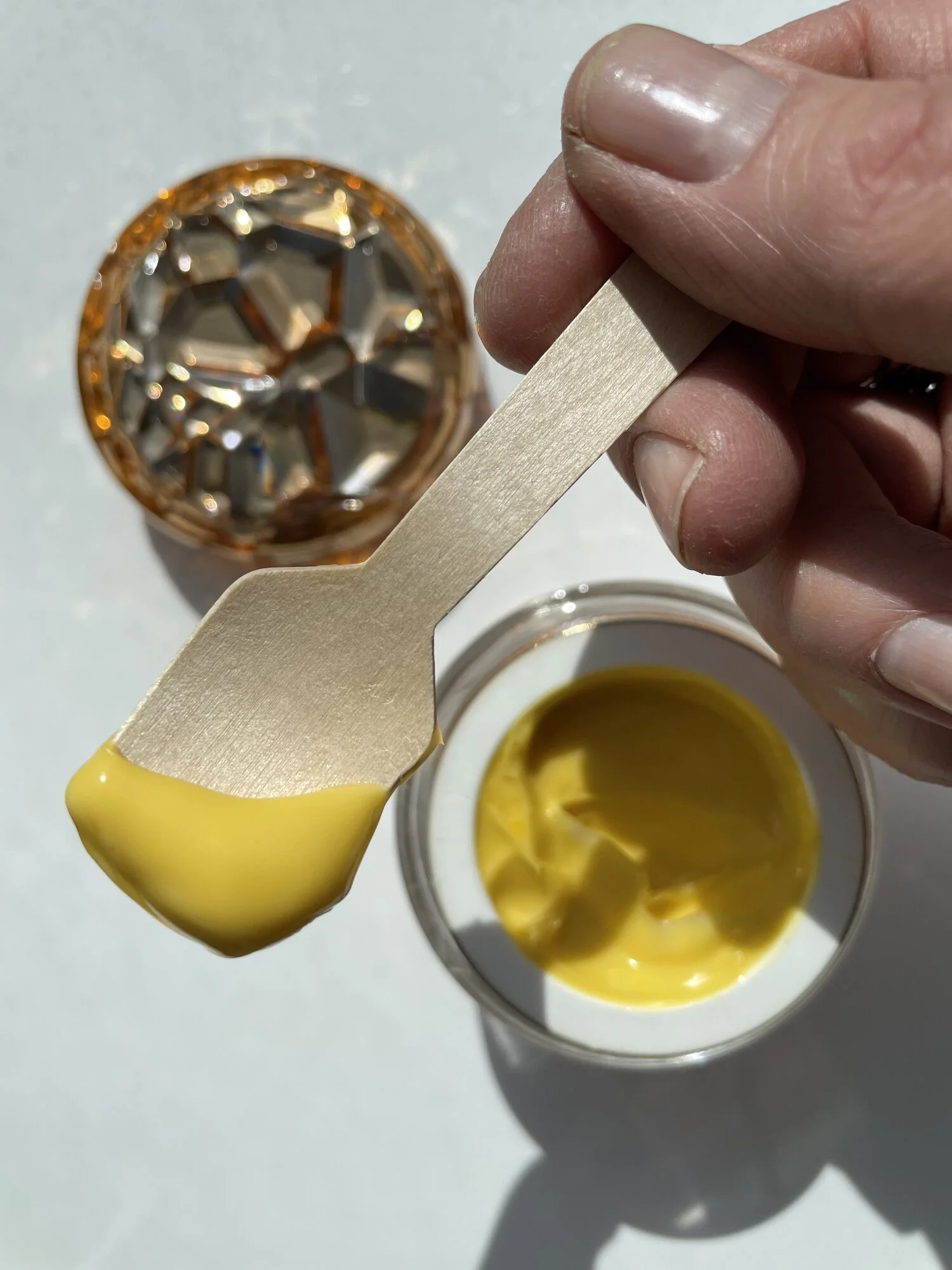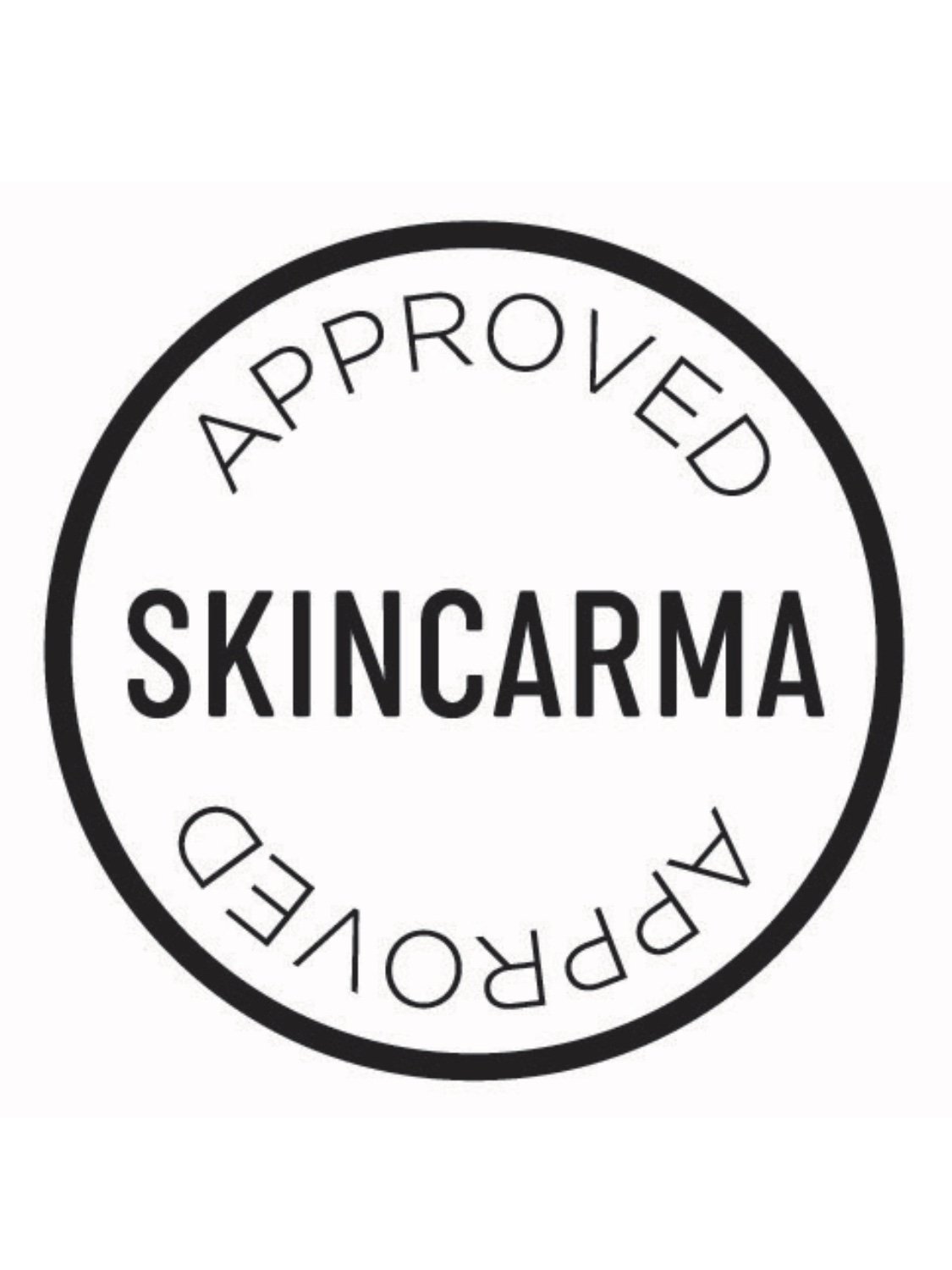SEASONAL SKINCARE TRANSITIONING: MOISTURIZERS I LOVE THAT MAKE ME EXCITED FOR COLD WEATHER - PART TWO – BEST MOISTURIZER FOR OILY SKIN, BEST FACE CREAMS FOR DRY SKIN
I just completed the most successful month I’ve had since I left the corporate world of Kiehl’s and L’Oreal to do my own thing. It’s been 13 years since I started my company, Carmine Montalto INK, Inc. I refer to it as a party of one, since I’m the only employee!
You may know that I worked in-house at Kiehl’s as their first-ever copywriter in the early 2000s. I had left the sun and harmony of Los Angeles for the energy and chaos of New York City and a newly created copywriting position at Kiehl’s. It was one of my favorite jobs of my entire life.
Before the move, I had been living in LA for 15 years, working various retail jobs, including my final retail position as the cosmetics department manager at Barneys in Beverly Hills. #ripbarneys! That’s where I was first introduced to the quirky skincare brand founded more than 150 years ago as a pharmacy in New York’s Lower East Side. As I recall, Kiehl’s was my number one brand out of more than 100.
I loved my work at Kiehl’s for most of the seven or so years that I was there. I named and crafted packaging copy for several of the company’s most successful and iconic products today, including, Kiehl’s Facial Fuel Energizing Moisturizer for Men, the popular facial oil Midnight Recovery Concentrate and Ultra Facial Cream — the top selling Kiehl’s product in the world today.
In the end, what was a wildly creative, fun, and exciting place to be had become too corporate for me. Too many reply-all emails, too many meetings, too much process. At the time, it seemed like it was stifling my creativity. In retrospect, I had come to the end of my creativity. I’d done everything I wanted to do and needed to expand my expertise as a copywriter in beauty.
So I gave three week’s notice and left for new, exciting adventures.
I was terrified at first. I had always worked for a company, for someone else. I had no idea how I was going to make it out in the world on my own, independent of a corporate structure — and a paycheck. I remember the day I realized I had to buy my own pens, notebooks and bottles of Wite-Out™. (Funny how I have no need for that stuff now!)
For several years, Kiehl’s remained a client of my new one-person copywriting and branding agency. But it was one of many. Since that seminal day when I drew up the courage to do my own thing, I’ve been fortunate to write for Dr. Dennis Gross, Dr. Jart, Algenist and even the Sephora brand, to name a few. It’s been a wild and wildly gratifying ride.
Reflecting back, I know now that I have truly taken to heart my favorite saying from Kiehl’s second-generation family founder, Mr. Aaron Morse…
“Love what you do. And that’s the trick of life. Love what you do, put your heart into it and you will be rewarded.”
Not only have I been gratified and nourished by my work as a copywriter each and every day of the last two decades, but my work at Kiehl’s, and reverence for Mr. Morse’s insight, inspired me to launch the Skincarma Blog.
It’s been nearly five years since I started the blog to lend my voice, my passion, and my knowledge of skincare to the ever-expanding conversation about skin and the products that promote (or don’t promote!) skin health.
There’s no better time of the year to put that to the test than the colder months ahead…
The skincare stuff starts here.
Last week, I kicked off my annual series on what I consider the best cold weather face creams for dry skin, oily skin and all skins in between. The article was titled, Seasonal Skincare Transitioning: Moisturizers I Love that Make Me Excited for Cold Weather - Part One. I invite you to check it out here.
While the four face creams I selected aren’t necessarily marketed for cold weather by the brand’s that offer them, my intent each year is to come up with the ideal collection of moisturizers that each skin type can use to maintain optimal skin health in the dry, low-humidity months between October and March. (At least those are the fall and winter months here in New York City.)
SEASONAL SKINCARE: MOISTURIZERS I LOVE THAT MAKE ME EXCITED FOR COLD WEATHER - PART ONE
My skin always feels like it’s under an invisible, insidious attack from the forces of cold air. If I don’t take extra care, like many people this time of year, the consequences of dry, dehydrated skin can be pretty extreme. Contrary to what skincare marketers promote, dehydration is the silent skin killer and one of the key causes of skin aging.
As I do each year, I think it’s super important to educate on the differences between dry skin and dehydrated skin…
What’s the Difference between Dry Skin and Dehydrated Skin?
Many people confuse the two. They’re not the same thing. Dry skin is a skin type. Dehydrated skin is a skin condition, just as being thirsty is a sign that your body is dehydrated. Dehydrated skin lacks water and any skin type, no matter its level of dryness or oiliness can be dehydrated.
In particular, dehydration is something that’s common to all of us in the cold as the low-humidity air around us draws water through the skin barrier and out of our skin. This process is referred to as trans-epidermal water loss, or TEWL. (More on TEWL in my review of the Skinfix Barrier+ Triple Lipid-Boost 360° Eye Cream below.)
As the cold weather kicks in, I think it’s helpful to understand the difference between dry skin and dehydrated skin in order to protect your skin health in the weeks ahead. For insights, I turned to the experts on the Paula’s Choice Research Team. There’s a superb piece on the Paula’s Choice site titled, What is Dehydrated Skin & How to Choose the Best Products.
Here is an excerpt:
Dehydrated skin often looks and feels like dry skin all over your face, but there's a major difference between the two: dehydrated skin is usually a temporary concern (with various surprising causes) and dry skin typically doesn't change over time. If you have dehydrated skin, your skin may also produce a normal or even excessive amount of oil on its surface.
"Dehydrated skin" is something we’re asked about frequently. It seems there’s a lot of confusion about what this skin concern is about. A major part of the confusion is that the term "dehydrated skin" is often used interchangeably with "dry skin" or "combination skin" but they are not the same! Dehydrated skin can occur in all skin types and is not exclusive to those with dry skin or combination skin.
The Difference Between Dry Skin and Dehydrated Skin
Having classically dry skin is easy to recognize. Dry skin frequently feels tight and dry, with no oil anywhere to be seen. This situation rarely fluctuates; skin feels dry all year long. The dryness might get worse depending on the climate, season, or activity, but regardless of those things, without great skin care products, the uncomfortable dry, tight feeling will persist.
As mentioned above, dehydrated skin can look and feel similar, but there’s a major difference: Dehydrated skin tends to come and go, it does not persist.
MY FAVORITE HUMECTANT SERUMS FROM PAULA'S CHOICE, THE INKEY LIST AND MORE - BEST HYALURONIC ACID SERUMS
The Skincarma “Lock and Block” Prevents Dehydration
To start, preventing dehydration in the first place requires drinking enough water. That differs for each of us based on our weight, the foods we eat, and the climate we live in. It’s even more important during colder periods.
A good rule is to drink one ounce of water each day for every pound of body weight. So, if you weigh 150 lbs., you’ll need to drink 150 ounces of water each and every day to keep your body and your skin optimally hydrated.
Then, employing skincare to treat and prevent dehydration requires what I refer to as a “lock and block” strategy.
It begins with a dedicated humectant serum applied to the skin in both your AM and PM routines that helps to lock water in. Follow with a moisturizer composed of a healthy balance of both humectants and oils to block and prevent the trans-epidermal water loss that can lead to dehydration.
WATCH MY VIDEO REVIEW OF
MY FAVORITE HUMECTANT SERUMS FROM PAULA'S CHOICE, THE INKEY LIST, GHOST DEMOCRACY AND MORE
ON MY YOUTUBE CHANNEL HERE
Last week, Part One in the series included one of my favorite cold weather face creams ever, the Skinfix Barrier+ Triple Lipid-Peptide Face Cream. With a real focus on skin barrier health, Skinfix is, in my opinion, one of the best clinical skincare brands.
And the brand’s Triple Lipid-Peptide Face Cream is simply among the best moisturizers for dry skin — and just about all skin types in winter except perhaps very oily and blemish prone.
I also included the Skinfix Barrier+ Triple Lipid-Boost 360° Eye Cream in my initial collection last week as the single eye cream recommendation. As I said, it’s a near-perfect eye cream that’s got everything the skin around the eyes needs, particularly during the harsh cold months of fall and winter.
MY WINTER SKIN SAVIOR: SKINFIX BARRIER+ LIPID REPLENISHING SKINCARE - BEST FACE CREAM FOR DRY SKIN
As I did in Part One, this week I’m selecting an additional four moisturizers and designating them for the unique skin type that I believe it’s best for — one in each of the main categories. In the product titles, you’ll see new call-outs for DRY SKIN, OILY / BLEMISH PRONE SKIN, SENSITIVE SKIN and ALL SKIN TYPES.
The Skinfix Triple Lipid-Peptide Cream, or TLPC as it’s known to fans, was my pick for dry skin. For oily and blemish prone skin, I was crazy excited to recommend the new Peace Out Repairing Moisturizer.
As with TLPC, the Peace Out Repairing Moisturizer is a terrific formula for protecting skin barrier health — not something you often see a focus of face creams for oily and blemish-prone skins. It’s such a smart, innovative formula.
PRODUCT REVIEW: PEACE OUT REPAIRING MOISTURIZER – BEST FACE CREAM FOR OILY SKIN AND BLEMISH PRONE SKIN
For sensitive skins, I selected the First Aid Beauty Ultra Repair Firming Collagen Cream — the brand’s richest moisturizer yet. First Aid Beauty is always my go-to for sensitive skins and the Ultra Repair Firming Collagen Cream is a superb face cream for dry, sensitive skin. I love its complex of proven skin soothers than can help to calm skin irritated by dry, cold air. That’s me in January!
Rounding out my Part One picks was my selection for all skin types — the Replenix Glycolic Acid 20% Resurfacing Cream. A brand created for skin professionals like dermatologists, Replenix is an unsung hero in the clinical skincare category.
And the brand’s Glycolic Acid 20% Resurfacing Cream is exceptional exfoliating face cream for all skins. With a 20% concentration of Glycolic Acid, the most powerful alpha hydroxy acid, it does so quite effectively. Surprisingly, it’s no where near as sensitizing as I expected it to be — even without a significant amount of soothing actives.
PRODUCT REVIEW: REPLENIX VITAMIN C PRO COLLAGEN SERUM - BEST VITAMIN C SERUM FOR DRY SKIN
As with the initial collection, the moisturizers I’ve selected for part two below all deliver that lock and block effect by locking hydration into the skin with humectants and blocking TEWL with effective levels of non-fragrant plant oils and/or lipids — essentially fats in the skin.
Today I’m presenting part two of my FW21 series on cold weather face creams, a collection that includes some of the best moisturizers for combatting dry, dehydrated skin — no matter the skin type.
For dry skin, the Algenist Genius Ultimate Anti-Aging Cream is a thick-whipped cream that just about needs a spoon to get out of the jar. Of course, I use a disposable wooden spatula but it almost seems like it’s not enough. The stuff is literally heaven for dry skin.
Speaking of heaven, Herbivore’s Aquarius Pore Purifying BHA Cream is just that for oily skin. Every time I open the jar, I expect a gel-cream and it’s just not. But that’s why I love it for oily skin in cold weather. It’s not oil-free, but it’s not heavy either. It’s got more oomph to it!
For sensitive skin, I have to go back to a classic. First Aid Beauty’s Ultra Repair Cream Intense Hydration is simply one of the best (if not the best!) moisturizer for sensitive skin. The Ultra Repair Cream is free of anything and everything that could irritate skin, and loaded with soothing actives that calm skin down when it does get irritated. It cocoons the skin in a comfortable moisture blanket.
Last, for all skin types, and for the delicate eye area is a pair of products from one of my favorite organic brands KORA Organics. The brand’s super cool, refillable Turmeric Glow Moisturizer is a treasure trove of natural ingredients, many of which are derived from organic farming.
As I said in my article on it, the Turmeric Glow Moisturizer a treasure trove of natural ingredients, many of which are derived from organic farming. And the new KORA Organics Berry Bright Vitamin C Eye Cream is an exceptional formula, loaded with hydrators and antioxidants — nearly perfect for the eye area.
Also new to this year’s blog articles, at the end of each review you’ll find a new section that breaks down what I like and don’t about the product as well as a deeper explanation of who I think it’s best for based on the formula make-up, texture and my own experience with it.
Let’s have a look at part two of my FW21 face cream picks, each of which I consider ideal for cold weather…
BEST FOR DRY SKIN:
Algenist | Genius Ultimate Anti-Aging Cream
Over the course of 2021, I’ve reviewed several intriguing products from the San Francisco-based biotechnology company, Algenist. In fact, one of my favorite new brand crushes this year has been Algenist.
The original bio-science brand is constantly innovating by creating new ways to address old problems — like dull skin and hyperpigmentation. That means introducing new products and even inventing new ingredients.
There aren’t many brands out there that invent entirely new ingredients for their own formulations. Most skincare ingredients are purchased from the same ingredient manufacturers. Or they’re bundled with other existing ingredients and given a catchy complex name by brand marketers.
An example of Algenist’s unique innovation philosophy, the brand’s new Blue Algae Vitamin C Skinclarity Brightening Serum was made with an exclusive, patented form of pure Ascorbic Acid, one that Algenist invented and recreates in their labs. You can catch my review of this cool new Vitamin C serum here.
PRODUCT REVIEW: ALGENIST BLUE ALGAE VITAMIN C SKINCLARITY BRIGHTENING SERUM - BEST VITAMIN C SERUM
Another of the brand’s newest innovations is the Algae Niacinamide Moisture Veil — one of the best Niacinamide serums for oily skin and skin that’s prone to blemishes. Algenist’s new Niacinamide Moisture Veil is the first Niacinamide serum I’ve come across that’s formulated specifically to help regulate skin’s natural oil production over time. It achieves that with the brand’s proprietary algae extracts.
While The Ordinary’s Niacinamide 10% + Zinc 1% is popular with oily skin types, there’s no clinical evidence that zinc is actually beneficial for oily or acne prone skin. It may have a beneficial effect, but it doesn’t appear to be significant.
Algenist’s Algae Niacinamide Moisture Veil is infused with the brand’s proprietary Alguronic Acid as well as a “Sebum-Fighting Algae Concentrate” that’s proven to help minimize excess sebum on the skin surface to control shine. If you’re an oily skin type, this is your Niacinamide serum.
PRODUCT REVIEW: ALGENIST ALGAE NIACINAMIDE MOISTURE VEIL - BEST NIACINAMIDE SERUM FOR OILY SKIN
While Algenist’s Genius Ultimate Anti-Aging Cream isn’t as wildly innovative as the brand’s two newest products, it’s a wonderful moisturizer for dry skin — and especially in the colder months.
As I said, it has this surprisingly thick-whipped texture that seems like it needs a dessert spoon to get out of the jar.
Before I go any further, let me share once again that I am no fan of skincare products in jars. Jars are great for peanut butter and condiments, but not so great for skin care. A jar exposes the often vulnerable ingredients in the formula to light, oxidation and even bacteria from your fingertips if you’re not using a spatula to retrieve the product.
Not all skincare ingredients are hypersensitive to the elements. Antioxidant vitamins and botanicals are particularly vulnerable when exposed. If you’re relying on a skincare product for its antioxidant potency, a good rule is to use it up within a month.
That said, while the Algenist Genius Ultimate Anti-Aging Cream does contain several antioxidant botanical extracts that can help to defend skin against environmental damage, they’re not the best antioxidants and not at significant levels.
With its higher concentrations of vegan collagen, ceramides and non-fragrant plant oils like Shea Butter, the formula is more focused on skin replenishment. It’s a whole lot of goodness for dry skin in the low humidity air of the fall and winter months.
What Is Collagen in Skin and How Can I Rebuild Collagen in My Face?
There’s a concerted debate about whether or not collagen applied to the skin, as with the Algenist Genius Ultimate Anti-Aging Cream, has any effect the skin’s collagen content. Whether its vegan collagen or animal-derived collagen, the substance cannot readily penetrate the skin barrier, a tight mesh whose purpose is to keep anything from getting into the body.
In truth, the most effective way to boost collagen in your skin and restore its youthful plumpness is to regularly apply either a well-formulated Vitamin C serum and/or a Retinol treatment, AM and PM. At high concentrations, both Vitamin C and Vitamin A (Retinol is a derivative) are proven to stimulate skin’s collagen production over time to plump out the skin and diminish the appearance of lines and wrinkles in the complexion.
There’s a superb article on the important role collagen plays in the body and in the skin on the Healthline website titled, Collagen — What Is It and What Is It Good For?
An excerpt from the article:
Collagen is the most plentiful protein in your body.
It has various important roles, including providing structure to your skin and helping your blood clot.
In recent years, it has gained popularity as a nutritional supplement and ingredient in shampoos and body lotions.
Still, you may wonder what collagen is, as well as what it’s good for. This article gives you a thorough overview of this important protein.
What is collagen?
Collagen is the most abundant protein in your body, accounting for about one-third of its protein composition.
It’s one of the major building blocks of bones, skin, muscles, tendons, and ligaments. Collagen is also found in many other body parts, including blood vessels, corneas, and teeth.
You can think of it as the “glue” that holds all these things together. In fact, the word comes from the Greek word “kólla,” which means glue.
What does it do in your body?
There are at least 16 types of collagen. The four main types are type I, II, III, and IV (1Trusted Source).
Here’s a closer look at the four main types of collagen and their roles in your body:
Type I. This type accounts for 90% of your body’s collagen and is made of densely packed fibers. It provides structure to skin, bones, tendons, fibrous cartilage, connective tissue, and teeth.
Type II. This type is made of more loosely packed fibers and found in elastic cartilage, which cushions your joints.
Type III. This type supports the structure of muscles, organs, and arteries.
Type IV. This type helps with filtration and is found in the layers of your skin.
As you age, your body produces less and lower quality collagen.
One of the visible signs of this is in your skin, which becomes less firm and supple. Cartilage also weakens with age.
So what is the point of collagen in topical skincare if the collagen cannot penetrate the skin barrier far enough to replenish skin’s deleted collagen level? Well, it can function as a barrier against TEWL, helping to keep skin from dehydrating in the cold.
As rich as it is, Ultimate Anti-Aging Cream actually melts right into the skin. I used it just last night as the last step of my PM skincare routine and noticed that 30 minutes after applying it, the product had been nearly soaked up. For a product as dense as this is, I find that remarkable.
Of course, the Algenist Genius Ultimate Anti-Aging Cream is infused with the brand’s proprietary, patented Alguronic Acid. The sustainably produced algae extract is found in all of the brand’s products and has multiple benefits for the skin — and for the other actives in the formula.
Alguronic Acid is clinically proven to multiply the benefits of other ingredients and is a superb skin hydrator, which is welcome in the drier air. Regrettably, since the product comes in a jar, I wouldn’t bank on the antioxidant benefits of the algae extract.
The brand uses a high concentration of the microalgae oil to moisturize and soothe skin as well as prevent and repair dryness. It’s a superb formula for comforting dry skin.
WATCH MY VIDEO REVIEW OF
AMPING UP THE BRIGHTENING WITH ALGENIST FOR SELFCARE SUNDAY
ON MY YOUTUBE CHANNEL HERE
What I like about it: The Algenist Genius Ultimate Anti-Aging Cream is a terrific moisturizer and one of the best face creams for dry skin in the colder months. I love its powerful replenishment benefits and the fact that as rich as it is, it melts right in.
What I don’t like about it: I’m not a fan of products in jars. The fact that Algenist’s Genius Ultimate Anti-Aging Cream formula is exposed to the elements, means your skin won’t fully benefit from the brand’s patented Alguronic Acid.
Who it’s for: Dry skin types year round and especially during the low-humidity colder months of fall and winter.
SHOP THE BLOG: Purchase the Algenist Genius Ultimate Anti-Aging Cream for $139 here.
The Ingredient List of the Algenist Genius Ultimate Anti-Aging Cream:
 sii|h 0 0, Chlorella Protothecoides Oil emo, Dimethicone emo 0 1, Butylene Glycol h|solv|vc 0 1, Glyceryl Stearate emo|emu 0 1-2, PEG-100 Stearate surf|emu 0 0, Butyrospermum Parkii (Shea) Butter
sii|h 0 0, Chlorella Protothecoides Oil emo, Dimethicone emo 0 1, Butylene Glycol h|solv|vc 0 1, Glyceryl Stearate emo|emu 0 1-2, PEG-100 Stearate surf|emu 0 0, Butyrospermum Parkii (Shea) Butter  emo|vc, Pentylene Glycol solv|h, Potassium Cetyl Phosphate emu|surf, Parachlorella Beijerinckii Exopolysaccharides, Collagen
emo|vc, Pentylene Glycol solv|h, Potassium Cetyl Phosphate emu|surf, Parachlorella Beijerinckii Exopolysaccharides, Collagen  h, Ceramide NP
h, Ceramide NP  sii, Cynara Scolymus (Artichoke) Leaf Extract, Retinyl Palmitate cci 1-3 1-3, Astragalus Membranaceus Root Extract
sii, Cynara Scolymus (Artichoke) Leaf Extract, Retinyl Palmitate cci 1-3 1-3, Astragalus Membranaceus Root Extract  aox|emo, Atractylodes Macrocephala Root Extract, Iris Florentina Root Extract, Bupleurum Falcatum Root Extract, Copper Lysinate/Prolinate
aox|emo, Atractylodes Macrocephala Root Extract, Iris Florentina Root Extract, Bupleurum Falcatum Root Extract, Copper Lysinate/Prolinate  cci, Methylglucoside Phosphate
cci, Methylglucoside Phosphate  cci, Stearalkonium Bentonite vc|vc, Acrylates/C10-30 Alkyl Acrylate Crosspolymer vc, Silica vc, Caprylyl Glycol h|emo, Sodium Hydroxide buff, Disodium EDTA chel, Ethylhexylglycerin pres, Cetyl Alcohol emo|emu|vc|surf 2 2, Propylene Carbonate solv|vc, Quartz abrasive/scrub, Phenoxyethanol pres, Leuconostoc/Radish Root Ferment Filtrate amic|pres, Chlorphenesin pres|amic, Fragrance (Parfum)
cci, Stearalkonium Bentonite vc|vc, Acrylates/C10-30 Alkyl Acrylate Crosspolymer vc, Silica vc, Caprylyl Glycol h|emo, Sodium Hydroxide buff, Disodium EDTA chel, Ethylhexylglycerin pres, Cetyl Alcohol emo|emu|vc|surf 2 2, Propylene Carbonate solv|vc, Quartz abrasive/scrub, Phenoxyethanol pres, Leuconostoc/Radish Root Ferment Filtrate amic|pres, Chlorphenesin pres|amic, Fragrance (Parfum)  perf, Coumarin
perf, Coumarin  perf
perfBEST FOR OILY / BLEMISH-PRONE SKIN:
Herbivore | Aquarius Pore Purifying BHA Cream
I’m a big fan of the clean, luxurious Herbivore brand. Over the past four or five years since I first discovered the brand, I’ve amassed so many Herbivore faves. In fact, several of the brand’s products are part of my regular skincare line-up, coming in and out of my daily routines.
Among my all-time favorites is the Herbivore Bakuchiol Retinol Alternative Smoothing Serum. One of the best anti-aging face serums with the Retinol alternative Bakuchiol, I named it the 2019 Skincarma Product of the Year. Psst…you can catch my review of it here.
If you’re like me, you approach Retinol products with a bit of fear in you. Skincare shouldn’t increase your anxiety; it should calm you and make you feel that every bit of selfcare you can muster is a good thing. Ironically, my own reluctance over Retinol is the very reason I was so intrigued by Herbivore’s clean Bakuchiol Retinol Alternative Serum in the first place.
THE SKINCARMA PRODUCT OF THE YEAR : HERBIVORE BAKUCHIOL RETINOL ALTERNATIVE SERUM
Whatever it is, the way you tell your story online can make all the difference.
Another favorite is the Herbivore Pink Cloud Jelly Cleanser. With its hard glass bottle and silky texture, it’s one of my favorite facial cleansers. It’s one of the best hydrating cleansers and ideal for colder weather.
The Pink Cloud Jelly Cleanser has a relatively tight ingredient list with just 20 ingredients, four of which are humectants — Aloe Barbadensis Leaf Juice, Glycerin, Sodium Hyaluronate and Tremella Fuciformis Sporocarp Extract aka Snow Mushroom. If you’re not familiar with Snow Mushroom, it’s a delicacy in Chinese cuisine, making a delicious soup. And it also happens to be a more effective humectant than tried-and-true Hyaluronic Acid.
PRODUCT REVIEW: HERBIVORE PINK CLOUD JELLY CLEANSER – BEST CLEANSER FOR DEHYDRATED SKIN
So, I expect pampering, high quality skincare from Herbivore. And the new Aquarius Pore Purifying BHA Cream certainly meets my expectations. I have to say that my expectations for oily skin moisturizers is not high to begin with. They’re mostly nonsense and do little, if anything, to promote skin health. To keep them feeling as light as possible, face creams for oily and blemish prone skin usually lack replenishing plant oils and are often little more than a few hydrators like Hyaluronic Acid and Glycerin and a plethora of useless fillers.
They’re nearly always oil-free gel creams.
All skin needs oil. If you’re human, your skin is composed of oils in the form of lipids, or fats. And if you’re oily, it’s not that you need zero oils in a moisturizer, you just need fewer of them to replenish your skin. I think it’s a mistake to omit oils from a moisturizer. In fact, if a product contains no oils, is it even a moisturizer?
Herbivore’s Aquarius Pore Purifying BHA Cream is heaven for oily skin. Every time I open the jar, I expect a common gel-cream and it’s just not. But that’s why I love it for oily skin in cold weather. It’s not oil-free, but it’s not heavy either. With Glycerin, Squalane and Caprylic/Capric Triglyceride, it’s both moisturizing and hydrating.
The Aquarius Pore Purifying BHA Cream is also infused with a multitude of antioxidant botanicals including a potent trio of Camellia Sinensis (Green Tea) Leaf Extract, Corallina Officinalis Extract (red algae) and Curcuma Longa (Turmeric) Root Extract — one of the best antioxidant actives used in skincare.
However, as with Algenist’s Genius Ultimate Anti-Aging Cream, because it comes in a jar, the antioxidant potency will begin to degrade in the presence of light and air the very first time you open it. Again, as a rule, it’s wise to use up a product in a jar within a month if you’re relying on the formula for its antioxidants.
Beyond its unexpected texture for oily skin, there’s a more expected pore-clarifying effect common to face creams formulated for oily and blemish prone skin types. As the name indicates, the Aquarius Pore Purifying BHA Cream contains a beta-hydroxy acid in the form of Salix Nigra (Willow) Bark Extract. Willow Bark is commonly associated with Salicylic Acid, one of the best ingredients for clearing out pores and helping to speed skin’s desquamation process by which it exfoliates dead surface skin cells. These can and do clog pores.
What Is Willow Bark Extract and Is Willow Bark the Same as Salicylic Acid?
There’s a superb article on the benefits of Willow Bark Extract as compared to Salicylic Acid on the Byrdie website titled, Willow Bark Extract for Skin: Benefits and How to Use. Here is an excerpt:
If you're one of the lucky ones who regularly experience breakouts, you're no stranger to salicylic acid, but how much do you know about willow bark extract? The plant extract is often touted as the gentle, natural alternative to salicylic acid, but can it really address your acne, slough away your dead skin, and remove excess oil as effectively as the tried and true BHA?
Feeling equal parts skeptical and hopeful (such is life with acne-prone skin), we turned to board-certified dermatologist and founder of Entière Dermatology Melissa Kanchanapoomi Levin, MD, and cosmetic chemist and founder of Perfect Image David Petrillo, to get some answers. Ahead, the similarities and differences between salicylic acid and willow bark extract, plus everything else worth noting about the latter ingredient.
What Is Willow Bark Extract?
Willow bark extract (or what Petrillo refers to as nature’s aspirin) is derived from various willow bark trees, including white, black, and purple. The ingredient is a natural salicin source, which is where the powerful acne-fighting ingredient that you're likely more familiar with, salicylic acid, comes from. Petrillo explains that, because of the salicin, willow bark extract has potent antibacterial and anti-inflammatory properties (which improves the appearance of pores and fine lines, Levin adds).
Not only does it have a rich supply of salicin, but as the skin experts point out, willow bark extract also has high concentrations of tannins, flavonoids, phenolic acids, and other minerals that help calm the skin and aid in cell regeneration. Because all of these ingredients allow for a more refreshed, youthful complexion, it makes sense why you might find willow bark extract included in all kinds of skincare products, likecleansers, moisturizers, toners, masks, and more.
Willow Bark Extract vs. Salicylic Acid
"Salicylic acid, a popular and effective beta-hydroxy acid, is extensively used in skin care for its exfoliative and keratolytic properties for the treatment of acne," Levin explains. But what about the slightly lesser-known exfoliating ingredient, willow bark extract? Are they basically the same thing? Let's explore.
Remember: Willow bark contains salicin, which is where salicylic acid comes from. The salicylic acid found in skincare products is the metabolized derivative, Petrillo explains. "Willow bark extract has been shown to produce similar results to synthetic salicylic acid, except without some of the drawbacks," Petrillo continues. "Even in small concentrations of 0.5% to 1%, salicylic acid may cause irritation, redness, flaking, and dryness. Those with sensitive skin may actually break out more because of salicylic acid." On the other hand, salicin in willow bark extract is a much gentler version of salicylic acid. "Studies have found that even at a level of 100%, which is equivalent to 10% formulation of salicylic acid, salicin is non-irritating," Petrillo adds.
However, Levin argues that the exfoliative and skin rejuvenating properties of willow bark extract compared to salicylic acid are less effective for treating acne and exfoliating the skin. "Nonetheless, willow bark extract can provide skin benefits, such as anti-inflammatory and antioxidative properties," Levin adds.
There’s also a healthy concentration of Zinc PCA in the formula, coming right after the Willow Bark Extract in the INCI. As a mineral, zinc helps to balance skin’s hydration levels. It can also help to moderate oiliness and shine.
According to the experts on the Paula’s Choice Research Team, Zinc PCA is “a synthetic skin-conditioning ingredient derived from zinc. Research has shown it has anti-aging benefits due to its ability to thwart destructive enzymes in skin that can damage its surface and lead to an aged, wrinkled appearance.”
There is also some evidence that zinc can have a positive effect on the occurrence of acne breakouts. I found an insightful piece on Coveteur titled, Zinc Up Your Beauty Routine For Clearer Skin that I found supportive of the theory. An excerpt from the article:
First, a quick primer on zinc: It’s an essential mineral for your health that helps boost your immune system and can help with wound healing. Our bodies don’t naturally produce it, meaning we need to eat zinc-rich foods or supplements in order to get our recommended daily amounts—8 mg for women, and 11 mg for men.
Additionally, zinc is known for being anti-inflammatory, which is where its place in skin care comes in. “Back in the early 1970s, doctor J. C. Fitzherbert first recognized an improvement in patients’ acne when treated with zinc,” says Dr. Morgan Rabach, board-certified dermatologist and co-founder of LM Medical NYC. It was used regularly on patients during that time, but eventually fell out of favor with derms, she notes, when more effective treatments were discovered.
That doesn’t necessarily mean zinc is old news—there are actually some promising studies being conducted that show there’s more to zinc than history has shown. “Zinc and acne is an interesting avenue,” says Dr. Kenneth Howe, a Manhattan dermatologist at Wexler Dermatology and assistant clinical professor at Mount Sinai. “There is quite a bit of evidence that both topical and ingestible zinc can be helpful, from studies showing it might be toxic to the bacteria that causes acne, to people with acne [possibly having] lower levels of zinc. But this is all fringe stuff—if you do a standard medical search, you don’t get much.
What I like about it: The Herbivore Aquarius Pore Purifying BHA Cream is one of the most well-rounded face creams for oily skin. It is not quite the innovation for oily and blemish-prone skin that Peace Out’s Repairing Moisturizer is, but it’s a superb product.
What I don’t like about it: It’s the jar for me. I get it, the Aquarius Cream wouldn’t seem nearly as luxurious as it does if it weren’t in this gorgeous glass jar, but all those wonderful antioxidants are nearly useless after too long. Boo…
Who it’s for: Predominantly oily and acne-prone skin types, but pretty much a solid purifying face cream for everyone.
SHOP THE BLOG: Purchase the Herbivore Aquarius Pore Purifying BHA Cream for $58 here.
The Ingredient List of the Herbivore Aquarius Pore Purifying BHA Cream:
 sii|h 0 0, Squalane
sii|h 0 0, Squalane  sii|emo 0 1, Glyceryl Caprylate pres, Microcrystalline Cellulose vc, Propanediol solv|h, Salix Nigra (Willow) Bark Extract, Zinc Pca
sii|emo 0 1, Glyceryl Caprylate pres, Microcrystalline Cellulose vc, Propanediol solv|h, Salix Nigra (Willow) Bark Extract, Zinc Pca  aacne|h, Aloe Barbadensis Flower Extract emo, Camellia Sinensis Leaf Extract
aacne|h, Aloe Barbadensis Flower Extract emo, Camellia Sinensis Leaf Extract  aox|so, Coccinia Indica Fruit Extract, Corallina Officinalis Extract, Curcuma Longa (Turmeric) Root Extract
aox|so, Coccinia Indica Fruit Extract, Corallina Officinalis Extract, Curcuma Longa (Turmeric) Root Extract  aox|so|sb|perf, Hamamelis Virginiana (Witch Hazel) Extract
aox|so|sb|perf, Hamamelis Virginiana (Witch Hazel) Extract  so|aox|amic, Melia Azadirachta Flower Extract, Melia Azadirachta Leaf Extract, Ocimum Basilicum (Basil) Flower/Leaf Extract, Ocimum Sanctum Leaf Extract, Solanum Melongena (Eggplant) Fruit Extract, Tanacetum Annuum Flower Oil, Lactobacillus Ferment
so|aox|amic, Melia Azadirachta Flower Extract, Melia Azadirachta Leaf Extract, Ocimum Basilicum (Basil) Flower/Leaf Extract, Ocimum Sanctum Leaf Extract, Solanum Melongena (Eggplant) Fruit Extract, Tanacetum Annuum Flower Oil, Lactobacillus Ferment  so|pres, Sodium Hyaluronate
so|pres, Sodium Hyaluronate  sii|h 0 0, Sodium PCA
sii|h 0 0, Sodium PCA  sii|h 0 0, Magnesium Pca h, Sodium Stearoyl Glutamate emu|surf, Cellulose Gum vc 0 0, Glyceryl Stearate Citrate emo|emu, Caprylyl Glyceryl Ether surf|surf, Caprylhydroxamic Acid chel
sii|h 0 0, Magnesium Pca h, Sodium Stearoyl Glutamate emu|surf, Cellulose Gum vc 0 0, Glyceryl Stearate Citrate emo|emu, Caprylyl Glyceryl Ether surf|surf, Caprylhydroxamic Acid chelThe Best Acne Treatments
BEST FOR SENSITIVE SKIN:
First Aid Beauty | Ultra Repair Cream Intense Hydration
On the blog, you may have noticed that science-based, dermatologist and clinical brands are my favorites! I would love to work on The Inkey List, Deciem’s high-science NIOD brand, Drunk Elephant…and First Aid Beauty! In the meantime, I’ll just have to keep writing about them, rather than for them.
I published a deep-dive into my favorite brand for sensitive skin, First Aid Beauty, nearly two years ago in an article titled, Brands I Love: First Aid Beauty And The Best Facial Skincare For Sensitive Skin, which you can read here.
BRANDS I LOVE: FIRST AID BEAUTY AND THE BEST FACIAL SKINCARE FOR SENSITIVE SKIN
As I’ve shared in every First Aid Beauty product review, the brand was created for sensitive skin, by someone with sensitive skin. It was founded by Lilli Gordon, a mother, grandmother, and entrepreneur with a background in beauty who, like so many, struggled with sensitivity.
In the years since I first experienced First Aid Beauty, it has become my go-to skincare brand for anyone with occasionally or chronically sensitive skin. FAB’s products are formulated to calm skin down, prevent irritation — and deliver nothing that could antagonize the skin, particularly sensitive skin.
With tried-and-true, soothing ingredients like Colloidal Oatmeal, Oat Kernel Extract, Shea Butter, Feverfew Extract, even honey at active levels, First Aid Beauty is the best facial skincare for sensitive skin types. Just as important as what’s in the FAB formulas is what’s not. Nary a drop of denatured alcohol, fragrance or fragrant plant oils.
They really nail it for sensitive and reactive skin.
FAB’s “Ingredients with Integrity”:
“At First Aid Beauty, we provide everyday essentials and targeted skincare solutions that deliver immediate relief, lasting results and feel-good textures. Our products are formulated with only clean, skin-loving ingredients. We carefully select our ingredients so you don’t have to worry about what’s in (and not in) your skincare products. There are over 1,300 ingredients on FAB’s no-no list, including Artificial Colorants and Artificial Fragrances, Parabens, Ethanol, Ethyl Alcohol, Denatured Alcohol, Methanol, N-Butyl Alcohol, Isopropyl Alcohol, SD Alcohol, Lanolin, Propylene Glycol, Phthalates, Mineral Oil, Petrolatum, Formaldehydes, Oxybenzone, Coal Tar, Hydroquinone, Triclosan, Triclocarban, Talc and Sulfates.”
One of my favorite hydrating toners ever is the First Aid Beauty Ultra Repair Wild Oat Hydrating Toner. It’s a superbly hydrating and soothing treatment for all skins, but particularly dry skin — or skin that’s experiencing seasonal dryness and sensitivity, as mine does in the colder months. If that sounds like you, be sure to catch my full review of the Ultra Repair Wild Oat Hydrating Toner on the blog here.
PRODUCT REVIEW: FIRST AID BEAUTY ULTRA REPAIR WILD OAT HYDRATING TONER – ONE OF THE BEST TONERS FOR DRY SKIN
From the get-go, I recognized that First Aid Beauty’s products were formulated to calm skin, prevent irritation — and deliver nothing that could antagonize the skin, particularly sensitive and sensitized skin. I’ve been there myself. I’m not necessarily sensitive, per se, but I have certainly overdone it from time to time and gone through bouts of vexing sensitization.
When I do, First Aid Beauty is where I turn.
First Aid Beauty has a superb collection of moisturizers. The brand’s Ultra Repair Oil-Control Moisturizer is among the best face creams for oily skin and especially oily skin that also tends to be sensitive, something that’s not all that common but is a vexing concern for those with oily, sensitive skin.
This year, First Aid Beauty introduced a richer face cream, I believe their richest — the Ultra Repair Firming Collagen Cream. With an unexpectedly thick texture that’s more like heavy pudding than a heavy moisturizer, it’s ideal for normal, normal to dry and dry skin types but especially for sensitive skins in the cold. I included it in Part One last week as my pick for sensitive skin types.
But there’s something truly exceptional about First Aid Beauty’s Ultra Repair Cream. It’s among the top selling moisturizers for all skin types, but especially sensitive skins.
In fact I occasionally experience a bit of sensitivity on my forehead — ground zero for my own skin sensitivity. I often turn to FAB’s Ultra Repair Cream Intense Hydration moisturizer.
The Ultra Repair Cream is one of the best face creams for dry skin that I’ve ever tried. It’s not too light, not too heavy — and it’s deliciously fluffy. Like a bowl of whipped cream. Make that whipped face cream!
The Ultra Repair Cream, like all the face creams in my cold weather moisturizer picks, is quite well-formulated. Because it’s formulated with sensitive skin in mind, there’s nary an essential oil in sight. It’s a clean formulation, too, devoid of all toxins and potential skin irritants like fragrance and denatured alcohol. I trust it on the most challenging days.
FAB describes Ultra Repair Cream as “a fast-absorbing, rich moisturizer that provides instant and long-term hydration for dry, distressed skin and eczema.”
Interestingly, eczema is something that I only began dealing with myself two winters ago. I had no idea what was going on with these sudden, super-itchy dry patches on my arms. (More on eczema in the next product review.)
What makes FAB’s Ultra Repair Cream so effective for dry, itchy, irritated skin is the Colloidal Oatmeal in the formula. Colloidal Oatmeal is a wonderful active for sensitive skin — and a First Aid Beauty fave. An FDA-designated skin protectant, it helps relieve itching and minor irritation caused by eczema, rashes, and other skin conditions. There’s also an effective level of moisturizing Shea Butter and soothing Allantoin.
First Aid Beauty’s Ultra Repair Cream is a relatively simply, high-quality face cream that does the job, and more. It’s also quite reasonably priced, starting at just $21 for a two-ounce tube.
What I like about it: The First Aid Beauty Ultra Repair Cream Intense Hydration is a personal favorite of mine, particularly when I’m experiencing any kind of irritation. When I do, I often stop using most skincare beyond a Niacinamide serum and the Ultra Repair Cream.
What I don’t like about it: I don’t like that it’s in a jar. But, FAB’s Ultra Repair Cream contains few, if any, sensitive ingredient that would degrade significantly in the presence of light and air.
Who it’s for: Sensitive skin types, dry skin experiencing discomfort, and eczema prone skin.
SHOP THE BLOG: Purchase the First Aid Beauty Ultra Repair Cream Intense Hydration for $48 here.
The Ingredient List of the First Aid Beauty Ultra Repair Cream Intense Hydration:
 sii|h 0 0, C12-15 Alkyl Benzoate emo|amic, Caprylic/Capric Triglyceride emo, Glyceryl Stearate SE emu 2 3, Glyceryl Stearate emo|emu 0 1-2, Cetearyl Alcohol emo|vc|emu|surf 1 2, Butyrospermum Parkii Butter
sii|h 0 0, C12-15 Alkyl Benzoate emo|amic, Caprylic/Capric Triglyceride emo, Glyceryl Stearate SE emu 2 3, Glyceryl Stearate emo|emu 0 1-2, Cetearyl Alcohol emo|vc|emu|surf 1 2, Butyrospermum Parkii Butter  emo|vc, Dimethicone emo 0 1, Squalane
emo|vc, Dimethicone emo 0 1, Squalane  sii|emo 0 1, Allantoin
sii|emo 0 1, Allantoin  so 0 0, Camellia Sinensis Leaf Extract
so 0 0, Camellia Sinensis Leaf Extract  aox|so, Caprylyl Glycol h|emo, Ceramide 3
aox|so, Caprylyl Glycol h|emo, Ceramide 3  sii, Chrysanthemum Parthenium Extract, Colloidal Oatmeal
sii, Chrysanthemum Parthenium Extract, Colloidal Oatmeal  so|aox|emo|abrasive/scrub, Disodium EDTA chel, Eucalyptus Globulus Leaf Oil
so|aox|emo|abrasive/scrub, Disodium EDTA chel, Eucalyptus Globulus Leaf Oil  perf|amic, Glycyrrhiza Glabra Root Extract
perf|amic, Glycyrrhiza Glabra Root Extract  so|sb, Sodium Hydroxide buff, Xanthan Gum vc, Phenoxyethanol pres
so|sb, Sodium Hydroxide buff, Xanthan Gum vc, Phenoxyethanol presBEST FOR ALL SKIN TYPES:
KORA Organics | Turmeric Glow Moisturizer
I love anything with turmeric in it. The Inkey List’s Turmeric Cream is one of my favorite moisturizers ever — and one of the best brightening face creams. That’s what turmeric does in skincare: it brightens the skin. It’s also a fantastic antioxidant.
But at higher concentrations it does smell, something that can turn off a lot of people. It’s ugly sexy. Like a lot of sneakers and male actors.
The new KORA Organics Turmeric Glow Moisturizer is of course powered by turmeric, but not so much turmeric that it’s off-putting. While The Inkey List Turmeric Cream reeks of it, the KORA Organics option is more tolerable.
RODUCT REVIEW: THE INKEY LIST TURMERIC CREAM – ONE OF THE BEST ANTIOXIDANT MOISTURIZERS
The brand’s Turmeric Glow Moisturizer is a treasure trove of natural ingredients, many of which are derived from organic farming or designated by the brand as “made using organic ingredients”.
To start, at ingredient number one is organic Aloe Barbadensis (Aloe Vera) Leaf Juice. I love when a brand’s chemists are wise enough to replace useless water with aloe vera or a fermented extract. These are nourishing for the skin and, in the case of aloe, have a humectant benefit and even some antioxidant activity on the skin. Water delivers nothing more than a temporary humectant benefit and wastes precious resources. Bravo to KORA Organics for that!
There are numerous emollients in the form of non-fragrant plant oils in the Turmeric Glow Moisturizer including organic Avocado Oil, organic Rosehip Seed Oil and organic Balanites Roxburghii Seed Oil — all in the top ten. I’d never heard of the latter. It’s perhaps better known as Desert Date Oil; though not better known to me.
There are also several skin brightening actives in KORA Organics’ Turmeric Glow Moisturizer. Among them Turmeric Root Extract, Licorice Root Extract, and Ascorbyl Glucoside — a stable, water-soluble form of Vitamin C.
According to the experts on the Paula’s Choice Research Team:
Ascorbyl glucoside is a stable form of vitamin C combined with glucose. When properly formulated and absorbed into skin, it breaks down to ascorbic acid (pure vitamin C). It functions as an antioxidant and works well with other replenishing and antioxidant ingredients to preserve key substances skin needs to look smoother, brighter, and younger.
Research on ascorbyl glucoside’s ability to improve uneven skin tone or spots isn’t too exciting, at least compared with more studied types of vitamin C; however ascorbyl glucoside plus the B vitamin niacinamide is a viable combination to consider, and several skincare products pair these ingredients.
Ascorbyl glucoside is a good form of vitamin C to consider, though as with any ingredient, skin will reap greater benefits from a mix of great ingredients rather than focusing on just one, hoping it does it all.
What Is Turmeric Root Extract and What Are the Benefits of Turmeric to the Skin?
Of course the star active in the formula is organic Curcuma Longa (Turmeric) Root Extract — one of the most potent antioxidants used in skin care. What is turmeric and what makes it so valuable for the skin? Of course, I found all the insights I needed from the experts on the Paula’s Choice Research Team.
Turmeric is a spice made from the dried, ground root of the Curcuma longa plant. It contains curcumin, a lipophilic, polyphenolic antioxidant pigment that gives turmeric its golden-yellow color.
In addition to being a food seasoning, turmeric has numerous health benefits whether consumed orally vis foods and supplements or applied topically. Ongoing research has shown turmeric and the curcumin it contains play a safe and compelling role in promoting healthier, normalized skin.
On skin, in vivo research has shown that turmeric and its derivatives interrupt signaling in surface cells that trigger signs of irritation. Turmeric helps calm skin and may even play a role in reducing the look of acne-related redness by modulating pathways to restore a healthier, more even appearance.
Research has conclusively shown that turmeric is a potent antioxidant, largely due to its curcumin content (although turmeric also contains other antioxidants). Applying turmeric to skin can help offset signs of environmental damage and, to some extent, thwart the skin-damaging effects from UVB light.
As with many antioxidants, turmeric requires protection from air and light, as routine exposure causes it to break down and limits its availability to skin.
Beyond being an antioxidant, some research has shown the curcumin portion of turmeric boosts skin’s hyaluronic acid content, meaning turmeric can also be considered hydrating.
With its deep yellow hue and brightening oomph, the KORA Organics Turmeric Glow Moisturizer is a brilliant formula — literally and figuratively. But what makes it so special, and sets it apart from just about everything else in the marketplace, is the refill pod component. It’s also super cool!
How exactly does it work?
Well, you start by purchasing your first KORA Organics Turmeric Glow Moisturizer for $58. That includes the kinda elegant, super durable plastic pot and a single refill pod. The jar’s lid is a bit too blingy for me, but it’s all good.
Then, when you’re running low on your face cream, you just need to purchase a new pod at $46 — a savings of $12.
Of course the whole thing only works if you love it enough to replace it. (And if you’re really, really into the gaudy lid!)
I gotta say, I think you may just love Turmeric Glow Moisturizer enough to keep using it again and again. It’s a perfectly well formulated antioxidant, emollient, and brightening face cream made with all-natural ingredients, many of which are organic or fermented actives.
Turmeric Glow Moisturizer has a soft, velvety texture that’s ideal for all skin types except oily and blemish prone. (There’s an option for you guys below!)
What I like about it: The KORA Organics Turmeric Glow Moisturizer is one of the most innovative and truly sustainable skincare products I’ve come across. KORA Organics really gets sustainability right. Plus, the Turmeric Glow Moisturizer is really a terrific formula for just about all skin types.
What I don’t like about it: The jar, the jar, the jar. Turmeric is a powerful antioxidant that can and will promote healthy functioning skin. But as an antioxidant it’s also super sensitive to air and light exposure. That said, the product’s smaller 1.7 oz / 50mL size means you’re very likely to use it up before significant degradation occurs.
Who it’s for: All skin types, except for super oily or blemish prone.
SHOP THE BLOG: SHOP THE BLOG: Purchase the KORA Organics Turmeric Glow Moisturizer for $58 here.
The Ingredient List of the KORA Organics Turmeric Glow Moisturizer:
 so|h, Glycerin^
so|h, Glycerin^  sii|h 0 0, Coconut Alkanes emo|solv, Cetearyl Alcohol emo|vc|emu|surf 1 2, Persea Gratissima (Avocado) Oil
sii|h 0 0, Coconut Alkanes emo|solv, Cetearyl Alcohol emo|vc|emu|surf 1 2, Persea Gratissima (Avocado) Oil  aox|emo 0 0-3, Rosa Canina (Rosehip) Seed Oil
aox|emo 0 0-3, Rosa Canina (Rosehip) Seed Oil  emo, Balanites Roxburghii Seed Oil, Water/Aqua/Eau solv, Lactobacillus Ferment
emo, Balanites Roxburghii Seed Oil, Water/Aqua/Eau solv, Lactobacillus Ferment  so|pres, Cetearyl Olivate
so|pres, Cetearyl Olivate  emu, Helianthus Annuus (Sunflower) Seed Oil
emu, Helianthus Annuus (Sunflower) Seed Oil  emo 0 0, Sorbitan Olivate
emo 0 0, Sorbitan Olivate  emu, Butyrospermum Parkii (Shea) Butter
emu, Butyrospermum Parkii (Shea) Butter  emo|vc, Hippophae Rhamnoides (Seabuckthorn) Fruit Oil
emo|vc, Hippophae Rhamnoides (Seabuckthorn) Fruit Oil  aox|emo, Passiflora Edulis (Maracuja) Seed Oil
aox|emo, Passiflora Edulis (Maracuja) Seed Oil  emo, Caprylic/Capric Triglyceride emo, Oryza Sativa (Rice) Extract abrasive/scrub, Lactobacillus, Ascorbyl Glucoside
emo, Caprylic/Capric Triglyceride emo, Oryza Sativa (Rice) Extract abrasive/scrub, Lactobacillus, Ascorbyl Glucoside  aox|sb, Coco-Caprylate/Caprate emo, Lactobacillus/Arundinaria Gigantea Leaf Ferment Filtrate, Astrocaryum Murumuru Seed Butter emo, Gossypium Herbaceum (Cotton) Seed Oil 2 3, Saccharomyces Lysate Extract h, Bidens Pilosa Extract h, Calendula Officinalis Flower Extract
aox|sb, Coco-Caprylate/Caprate emo, Lactobacillus/Arundinaria Gigantea Leaf Ferment Filtrate, Astrocaryum Murumuru Seed Butter emo, Gossypium Herbaceum (Cotton) Seed Oil 2 3, Saccharomyces Lysate Extract h, Bidens Pilosa Extract h, Calendula Officinalis Flower Extract  so|aox|perf, Cocos Nucifera (Coconut) Fruit Extract emo, Potassium Sorbate pres, Lavandula Angustifolia (Lavender) Oil
so|aox|perf, Cocos Nucifera (Coconut) Fruit Extract emo, Potassium Sorbate pres, Lavandula Angustifolia (Lavender) Oil  amic|perf, Linum Usitatissimum (Linseed) Seed Oil
amic|perf, Linum Usitatissimum (Linseed) Seed Oil  emo|perf, Lactic Acid
emo|perf, Lactic Acid  exf|h|buff, Phospholipids
exf|h|buff, Phospholipids  sii|emo, Citrus Limon (Lemon) Peel Oil
sii|emo, Citrus Limon (Lemon) Peel Oil  perf, Hydrolyzed Sodium Hyaluronate h, Mentha Piperita (Peppermint Indian) Leaf Oil
perf, Hydrolyzed Sodium Hyaluronate h, Mentha Piperita (Peppermint Indian) Leaf Oil  , Sclerotium Gum vc, Potassium Hydroxide buff, Curcuma Longa (Turmeric) Root Extract
, Sclerotium Gum vc, Potassium Hydroxide buff, Curcuma Longa (Turmeric) Root Extract  aox|so|sb|perf, Glycyrrhiza Glabra (Licorice) Root Extract
aox|so|sb|perf, Glycyrrhiza Glabra (Licorice) Root Extract  so|sb, Morinda Citrifolia Fruit Extract, Yeast (Faex) Powder, Sodium Phytate chel, Cylindrotheca Fusiformis Extract aox, Leuconostoc/Radish Root Ferment Filtrate amic|pres, Cananga Odorata Flower Oil
so|sb, Morinda Citrifolia Fruit Extract, Yeast (Faex) Powder, Sodium Phytate chel, Cylindrotheca Fusiformis Extract aox, Leuconostoc/Radish Root Ferment Filtrate amic|pres, Cananga Odorata Flower Oil  perf, Juniperus Virginiana (Cedarwood) Oil, Leuconostoc Ferment Filtrate amic|pres, Tocopherol
perf, Juniperus Virginiana (Cedarwood) Oil, Leuconostoc Ferment Filtrate amic|pres, Tocopherol  aox 0-3 0-3, Bisabolol
aox 0-3 0-3, Bisabolol  so, Soybean Peroxidase aox, Superoxide Dismutase
so, Soybean Peroxidase aox, Superoxide Dismutase  aox, Alcohol
aox, Alcohol  amic|solv|vc, Citral
amic|solv|vc, Citral  perf, Geraniol
perf, Geraniol  perf, Limonene
perf, Limonene  perf|solv, Linalool
perf|solv, Linalool  perf
perfEYES:
Kora Organics | Berry Bright Vitamin C Eye Cream
Like the brand’s Turmeric Glow Moisturizer, the new Berry Bright Vitamin C Eye Cream is fully refillable, sustainable — and replaces water with Aloe Vera Leaf Juice. I love when a brand’s chemists are wise enough to replace useless water with aloe vera or a fermented extract. These are nourishing for the skin and, in the case of aloe, have a humectant benefit and even some antioxidant activity on the skin. Water delivers nothing more than a temporary, ten-second humectant benefit and wastes precious resources.
The new KORA Organics Berry Bright Vitamin C Eye Cream is an exceptional formula. First, of course is the replacement of water with Aloe Vera Leaf Juice. I think it gives the formula a distinct texture and finish on the skin..
Berry Bright has a medium weight, velvety texture that’s not too rich, not too light. For me, it’s perfect as we transition into cooler weather here in NYC. The brand says it’s infused with 5.5% Vitamin C, which is a nice amount for brightening the eye area.
What Does Vitamin C Do for Skin and Does Vitamin C Really Help Skin?
There’s an excellent article on the remarkable benefits of Vitamin C for the skin from the experts on the Paula’s Choice Research Team titled, What is Vitamin C and How Does it Benefit Skin?
Vitamin C is one of the most exciting, research-proven ingredients you can apply to skin. This water-soluble antioxidant is a natural component of healthy skin. When we’re young, vitamin C levels in skin’s outermost two layers (epidermis and dermis) are abundant, but as we age, these levels naturally deplete. Unprotected sun exposure (UV damage) and pollution can accelerate this decline, leading to skin looking and feeling dull, uneven, and less firm than it once was.
Luckily, there are topical skin care solutions that can help mitigate this damage, so skin looks and feels healthier and younger longer.
Vitamin C Benefits for Skin
Vitamin C’s benefits for skin are vast, including its ability to even out skin tone and diminish the appearance of fine lines and wrinkles. While this powerhouse ingredient is well-known for its skin-brightening benefits, research also shows it can shield skin from the visible impacts of environmental stressors, including free radical damage. This synergy of mitigating problems both before and after they occur makes vitamin C a force to be reckoned with.
But what I really love is the plethora of non-fragrant plant oils and numerous pro-skin health ferments. At ingredient number two after Aloe Barbadensis (Aloe Vera) Leaf Juice, is Rosehip Seed Oil — one of the best anti-aging face oils.
The inclusion of fermented actives like Lactobacillus Ferment help to nourish delicate eye area skin while antioxidant botanicals help protect the thin skin around the eyes from environmental damage.
If you’re interested in a fully sustainable, refillable, organic eye cream, the KORA Organics Berry Bright Vitamin C Eye Cream is the perfect option.
The Best Sunscreens for Eyes
What I like about it: The KORA Organics Berry Bright Vitamin C Eye Cream is pretty much a near-perfect eye cream for all skin types. I love the formula and even more so, I love that the product is refillable. Come on, would you really want to toss that gorgeous jar?
What I don’t like about it: As much as I love the jar, it’s still not the best way to deliver a skincare product. Like the KORA Organics Turmeric Glow Moisturizer, you really have to use it up quickly to benefit from its antioxidant potency. Ironically, because it comes in just a half ounce, 50 mL size, you’re likely to use it up within a month.
Who it’s for: All skin types.
SHOP THE BLOG: Purchase the KORA Organics Berry Bright Vitamin C Eye Cream for $54 here and a refill pod for $44 here.
The Ingredient List of the KORA Organics Berry Bright Vitamin C Eye Cream:
 so|h, Rosa Canina (Rosehip) Seed Oil
so|h, Rosa Canina (Rosehip) Seed Oil  emo, Glycerin
emo, Glycerin  sii|h 0 0, Balanites Roxburghii Seed Oil, Cetearyl Alcohol emo|vc|emu|surf 1 2, Water/Aqua/Eau solv, Coconut Alkanes emo|solv, Lactobacillus Ferment
sii|h 0 0, Balanites Roxburghii Seed Oil, Cetearyl Alcohol emo|vc|emu|surf 1 2, Water/Aqua/Eau solv, Coconut Alkanes emo|solv, Lactobacillus Ferment  so|pres, Oleic/Linoleic/Linolenic Polyglycerides
so|pres, Oleic/Linoleic/Linolenic Polyglycerides  emo, Cetearyl Olivate
emo, Cetearyl Olivate  emu, Sorbitan Olivate
emu, Sorbitan Olivate  emu, Propanediol solv|h, Ascorbyl Glucoside
emu, Propanediol solv|h, Ascorbyl Glucoside  aox|sb, Persea Gratissima (Avocado) Oil
aox|sb, Persea Gratissima (Avocado) Oil  aox|emo 0 0-3, Helianthus Annuus (Sunflower) Seed Oil
aox|emo 0 0-3, Helianthus Annuus (Sunflower) Seed Oil  emo 0 0, Lactobacillus, Butyrospermum Parkii (Shea) Butter
emo 0 0, Lactobacillus, Butyrospermum Parkii (Shea) Butter  emo|vc, Coco-Caprylate/Caprate emo, Potassium Sorbate pres, Eclipta Prostrata Extract, Cocos Nucifera (Coconut) Fruit Extract emo, Chenopodium Quinoa Seed Extract, Panax Ginseng Root Extract
emo|vc, Coco-Caprylate/Caprate emo, Potassium Sorbate pres, Eclipta Prostrata Extract, Cocos Nucifera (Coconut) Fruit Extract emo, Chenopodium Quinoa Seed Extract, Panax Ginseng Root Extract  aox|emo, Sclerotium Gum vc, Rubus Chamaemorus Fruit Extract aox, Morinda Citrifolia Fruit Extract, Sodium Phytate chel, Anigozanthos Flavidus Extract, Melia Azadirachta Leaf Extract, Terminalia Ferdinandiana Fruit Extract aox|sb, Sodium Benzoate pres, Potassium Hydroxide buff, Hippophae Rhamnoides (Seabuckthorn) Fruit Oil
aox|emo, Sclerotium Gum vc, Rubus Chamaemorus Fruit Extract aox, Morinda Citrifolia Fruit Extract, Sodium Phytate chel, Anigozanthos Flavidus Extract, Melia Azadirachta Leaf Extract, Terminalia Ferdinandiana Fruit Extract aox|sb, Sodium Benzoate pres, Potassium Hydroxide buff, Hippophae Rhamnoides (Seabuckthorn) Fruit Oil  aox|emo, Tocopherol
aox|emo, Tocopherol  aox 0-3 0-3, Moringa Oleifera Seed Oil
aox 0-3 0-3, Moringa Oleifera Seed Oil  emo, Alcohol
emo, Alcohol  amic|solv|vc
amic|solv|vcI hope this helps you to find your ideal cold weather face cream — one that both hydrates and moisturizes your skin to prevent dryness and dehydration. And, be sure to apply sunscreen every morning. Yes, it’s just as essential on a cloudy, seemingly sunless winter day as it is on a bright and sunny, summer day. For my top sunscreen recommendations, check out my picks of the best sunscreens for face here.
See you next week…
💟 Carmine @skincarma
The Best Sunscreens for Face
WATCH MY VIDEO REVIEW OF
MY WINTER SKIN SAVIOR: SKINFIX BARRIER+ LIPID REPLENISHING SKINCARE
ON MY YOUTUBE CHANNEL HERE
WATCH MY VIDEO REVIEW
HOW’S YOUR MICROBIOME DOING? THE BEST WAY TO CHECK YOUR MICROBIOME HEALTH…
ON MY YOUTUBE CHANNEL HERE
WATCH MY VIDEO REVIEW
A COMPLETE K-BEAUTY ROUTINE WITH THE BEST FACIAL SKINCARE FROM PURITO, COSRX, MISSHA & MORE!
ON MY YOUTUBE CHANNEL HERE
WATCH MY VIDEO REVIEW
RETINOL, RETINOIDS, RETINOIC ACID PART ONE - THE BEST RETINOL FACE CREAMS & SERUMS
ON MY YOUTUBE CHANNEL HERE
WATCH MY VIDEO REVIEW OF
MY WINTER SKIN SAVIOR: SKINFIX BARRIER+ LIPID REPLENISHING SKINCARE
ON MY YOUTUBE CHANNEL HERE
SKINCARMA X HERBAL FACE FOOD EXCLUSIVE!
FOR A LIMITED TIME, SAVE 20% OFF HERBAL FACE FOOD!
Enter code SKINCARMA20 at checkout.
WATCH MY VIDEO REVIEW
THE YEAR’S BEST VITAMIN C SERUMS WITH THE ORDINARY, CLINIQUE, BEAUTY STAT & MORE!
ON MY YOUTUBE CHANNEL HERE
WATCH MY VIDEO REVIEW
AMPERNA PROBIOTIC SKINCARE AND TWO OF THE BEST ANTI-AGING SERUMS FOR SENSITIVE SKIN
ON MY YOUTUBE CHANNEL HERE
WATCH MY VIDEO REVIEW
MY #SELFCARESUNDAY ESSENTIALS WITH SKINFIX, HERBIVORE AND SELFLESS!
ON MY YOUTUBE CHANNEL HERE



